Issue: 013

Devour: Art & Lit Canada
is dedicated to the Canadian voice.
ISSN 2561-1321
Issue 013

Issue: 013

Devour: Art & Lit Canada
is dedicated to the Canadian voice.
ISSN 2561-1321
Issue 013
Find some of Canada’s finest authors, photographers and artists featured in every issue.

 Cover art by, Jennifer Trefiak
Cover art by, Jennifer Trefiak
is to promote the Canadian art world by bringing world-wide readers some of the best Canadian literature, art and photography.
ISSN 2561-1321
Issue 013
July 2022
Devour: Art and Lit Canada
5 Greystone Walk Drive
Unit 408
Toronto, Ontario
M1K 5J5
905-376-9106
DevourArtAndLitCanada@gmail.com
Cover Art – Jennifer Trefiak
Back Cover Photograph – Ken Solilo
Publisher – Editor-in-Chief – Richard M. Grove
Layout and Design – Richard M. Grove
NFOTA Coordinator – Shane Joseph
As publisher of Devour: Art & Lit Canada it is always my pleasure to bring a world-wide readership two issues per year. This issue I had a special privilege of working with the NFOTA team on a large section dedicated to the Northumberland Festival of the Arts . In this issue, mixed with our regular content, we are covering two main sections of the festival program: 1 – “Art, Artisan & Photography Events” , and 2 – “Literary Events” but don’t forget that the festival is much more than Art & Lit. To find info about “Music Events” , “Drama & Film Events” and “Learning & Creative Opportunities” you can go to https://festivalofthearts.ca/ . Good luck with your September festival. Thank you for giving a facelift to Canadian culture.
As usual Devour brings you “Poetry Canadian” edited by Bruce Kauffman , and “Canada in Review” by Shane Joseph . Both of these ongoing features are the life blood of Devour: Art & Lit Canada. On page 38 you will find feature photographer Olaf Dijkstra.
All the best, Richard M. Grove / Tai, Publisher
As the Poet Laureate of Brighton, Ontario, it was my privilage to present my poem at a this year’s Canada Day celebration.
Richard Grove / TaiJuly 01, 2022
Dear Canada:
You are a place of places, where each of us calls home. You are more than gorgeous clean rivers and lakes that feed our souls, more than forests and open plains that fill our hearts with inspiration, more than mountains and ocean shores that whelm our appreciation and respect of nature.
Canada, you are more than all of this. You are a collective of people of every race including the original indigenous peoples, including the immigrant settlers, including the multi-generation Canadians.
Canada, you are our home where each and all can grow and strive and thrive and flourish in tolerance and peace under the eternity of stars that make us sisters and brothers.
At the risk of committing the self-righteous original sin of pride
I must say I am proud to be Canadian. Not because I or we are better than others but because we strive to grow to be better than we were in the moments before now, proud to be better than the days of past mistakes.
I am proud to be Canadian. Canada, we love you.
Ps – We are blessed to live in Brighton one of the string of pearls that links us coast to coast to coast. As Brightonites we are part of what makes Canada great.
Summer 2022 Issue #013
More than 40 events over 16 days in 8 towns and cities in Northumberland.
NFOTA celebrates the creative spirit of Northumberland. As a not-for-profit arts organization, NFOTA brings together actors and artisans, painters and photographers, musicians, singers and dancers, writers and poets in a grand collaborative showcase over two weeks in September 2022.
Contributors: Felicia Massey, Shane Joseph, Felicity Sidnell Reid, Kate Rogers, Gwynn Scheltema, Jennifer Trefiak, Donna Wootton
www.festivalofthearts.ca
Devour: Art and Lit Canada

The newly branded not-for-profit corporation Northumberland Festival of the Arts, with nearly fifty events, taking place over sixteen days in eight towns and cities in Northumberland County, Ontario began at the grass roots level with the Spirit of the Hills Writers Group.
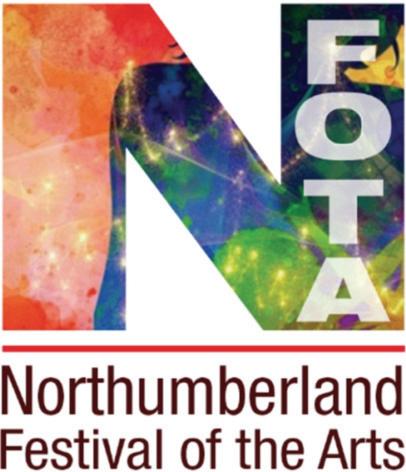
This feisty group of writers, poets, editors, and publishers came together to network and help one another get known in the community and sell their books. They tried a number of tactics, from taking part in other festivals like Cobourg's Jazz Festival and the Waterfront Festival. They held their own version of Word on the Street: Word Northumberland; they held book launches around the county. All these events were successful, but in a small way, because they were isolated niche activities. In 2017, the writers approached other artists—visual artists, singers, and musicians— to collaborate on a mini-festival. The artists and musicians would also showcase their work and offer it for sale. Collectively, we would appeal to a wider audience and all rise on the same tide. It worked!
And in 2019 we did it again, this time expanding to include drama, photography, multimedia, dance, writing, photography and play writing contests. The Festival took place in Cobourg over three days. We received good reviews and many positive responses from the attendees. The Town of Cobourg honoured two of the organizers with Civic awards for their work on the Festival, recognizing an event of this nature to be a valuable tool in the growth and promotion of the area.
For the next Festival in 2021, (now pushed to 2022 because of COVID-19) we wanted to build on that concept: collaborate with groups that are already offering arts performances and exhibits, create synergy, optimize the limited resources available to the arts community, and include artists and communities that are often ignored.
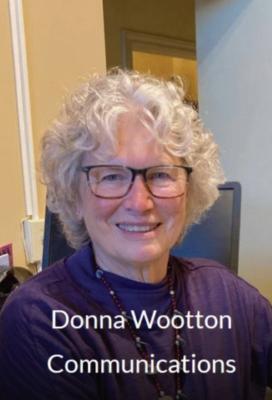
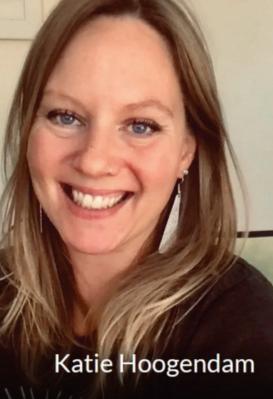
https://festivalofthearts.ca/events/
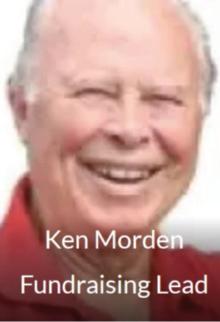
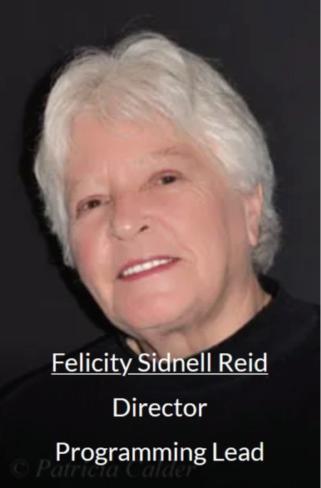
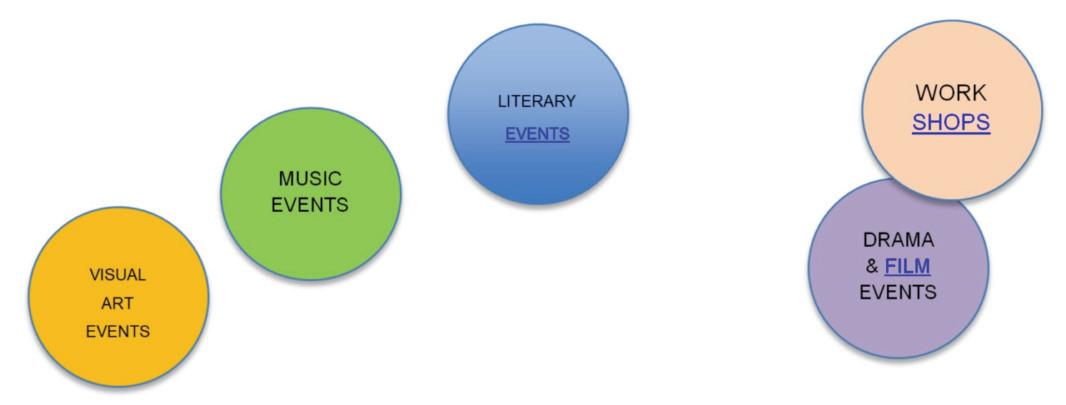
Featured in the following pages are details of the events and the artists who will be performing at the Northumberland Festival of the Arts. View the whole event schedule and purchase tickets : Connect to the festival website from any of the coloured buttons.


Click to see more about the NFOTA Team https://festivalofthearts.ca/about2/the-team/
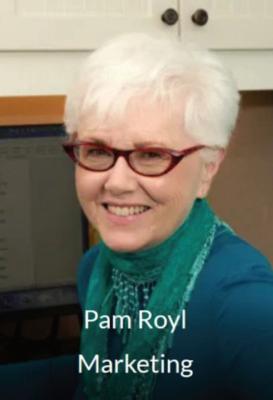
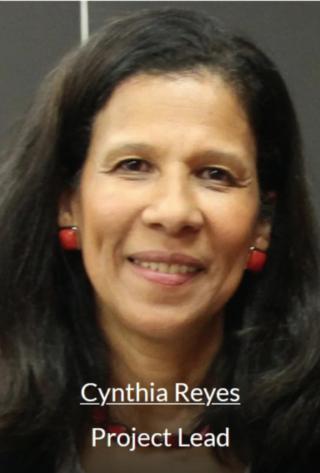
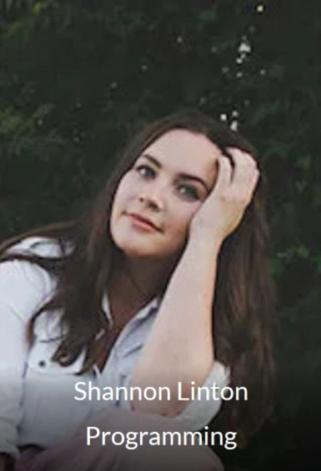





Merriam-Webster defines resilience as a noun that means: “the ability to become strong, healthy, or successful again after something bad happens.” That’s pretty heavy because the events that lead us to become resilient are not insignificant; these are life-altering events such as death, job loss, discrimination, illness, abuse, and trauma. What’s interesting to me about resilience is that you don’t know if you are resilient until you’ve come through to the other side; it is a test of your endurance as a human being and a test of your spirit. Becoming resilient is a painful experience.
Just as you don’t know if you’re resilient until you’ve made it to the other side of adversity, you cannot celebrate resilience until you have healed from those moments that tested you. Some moments can never be celebrated at all, it’s enough to make it through. For some, the past two years have been a blessing; for others, a time of struggle. For the arts sector it has been both.
The arts became a shining light for the world to grasp onto during the frightening beginning of the pandemic when so much was unknown. We felt alone and so we attended virtual concerts, online art openings, and play readings. As artists we had endless time to create and to explore our inner worlds. The arts brought all of us solace and joy when we needed it the most. The other side to that is that many artists have felt the financial and spiritual burden of the past two years. Those venues that we require to make music, display art, and read poetry have not been available until very recently. We too, have had to adjust ourselves to the virtual world, and for some artists and arts groups that has been difficult or impossible.
As for the spiritual burden, if you do not have an audience you do not have art. If your book isn’t read, your song not performed and your artwork not seen, then does the art really exist? Art exists only in relationship to the audience receiving it. At least, that’s what I believe. When we bring art to people there is an energy and a connection which emerges that simply doesn’t exist on a screen.
Slowly, we are gathering the pieces of ourselves and coming together. As we begin to move into public spaces once more, I dearly hope that the individuals who took pleasure and comfort in the arts from their living room couch will support us in person. I also hope that we as artists and arts institutions continue to make our work accessible to everyone.
Which brings me back to the topic at hand, resilience. When I find myself looking for answers, I always look to Mother Earth. She speaks if you listen, and resilience is her middle name. When a forest burns, there is a period of regeneration afterwards. In fact, many plant species require a fire in order to propagate and thrive. It’s a natural cycle of life and one which Indigenous cultures know well. Destruction creates resilience, regrowth, and beauty.
We as an arts community will move into a period of regrowth and beauty, like after a forest fire. Where resilience factors in, is in how we move forward. Do we do the same as we’ve always done? Or do we take these teachings from this time period to enhance the experience of our shared love of all things beautiful and compelling? Once you burn you can’t forget. Those seedlings of creativity, so freely shared during the pandemic and carefully tended by those desiring them, will not forget their roots. Those lessons will structure our collective resilience and regrowth. They will guide us into the next phase of art creation and appreciation. Then, we can celebrate.
 Jennifer Trefiak near Marathon, Ontario
Jennifer Trefiak near Marathon, Ontario
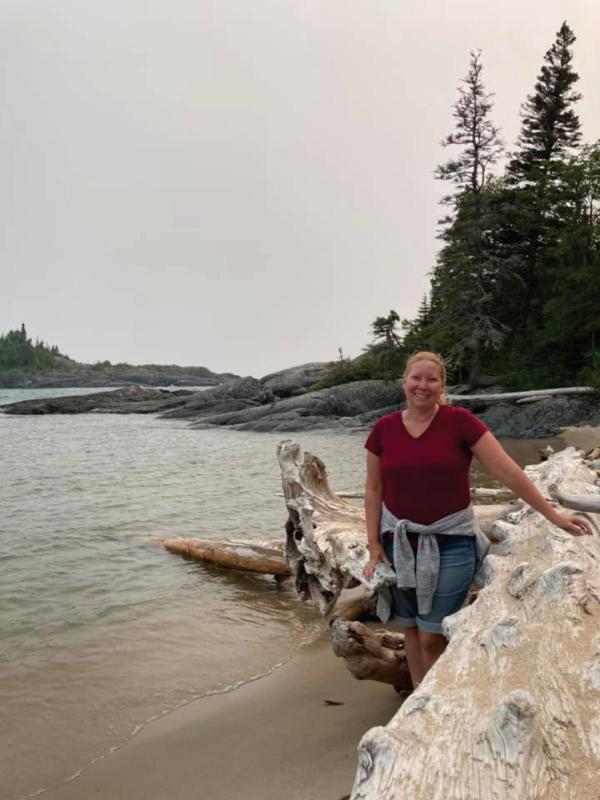


https://youtu.be/8AUWd4fHKrA
One of the pillars of NFOTA is collaboration: artists helping other artists. The birth of NFOTA’s theme song is an example of that in action.
Three local musicians and singers, . Lynn C. Bilton, Christopher Cameron, and Marie-Lynn Hammond, got together to produce a theme song for the festival and then gifted it to the organization for all their marketing needs.

The three NFOTA volunteers, named their group What Fun!, and the song, “Spread the Word was recorded locally at the Northumberland Music Studio, or Studio 29, in Warkworth,”.
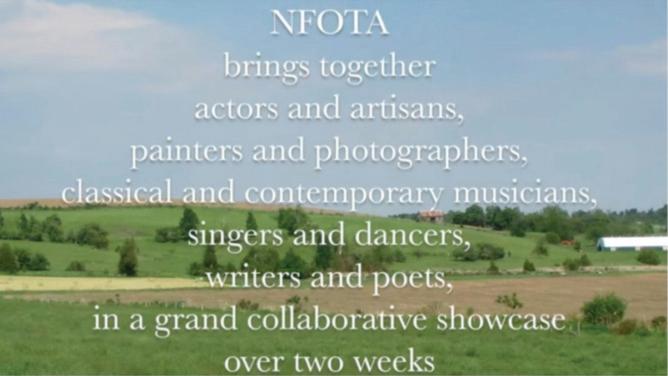
Wander through an exhibit, engage with an artist or purchase a unique piece of art to enjoy at home.
Throughout the day, art lovers can tour at their own pace through galleries in the Warkworth Area. Enjoy exhibits at the Periphery Gallery, Oak Heights Gallery, and Canadian Tapestry and Texture Centre. Take in a demonstration of ceramics or glass blowing at Frantic farms and round it off with a visit to the Warkworth Library to see the Spirit of the Hills “Foot by Foot” show. Periphery Gallery will also offer a performance of music and interpretive dance in harmony with sculpture and landscape at 4pm.


The Ontario Society of Artists (OSA) and the Art Gallery of Northumberland (AGN) invite you to an exhibition titled Ambient Landscapes with the themes of “Breath. Heart. Spirit.” This exhibition celebrating the 150th Anniversary of the OSA, will include about 40 artworks featured in the main gallery of the AGN.
Mounted by the Art Gallery of Northumberland, be prepared for some interactive surprises in this exhibit that takes its cue from the NFOTA vision.
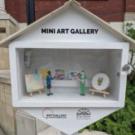
Spirit of the Hills Foot by Foot Show and Sale. (Warkworth)
Throughout the festival during Library Hours, visit a fun show put on by the artists of the Spirit of the Hills Arts Association. All original works measure 1 square foot and include photography, painting, drawing, textiles, glass, collage, mixed media, and low relief modelling, and they are all for sale for just $125 each!
9th Annual Open Juried Show at the Colborne Gallery (Colborne)
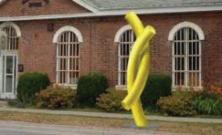
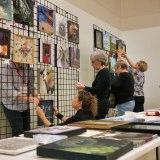
Original works in all visual art forms: painting, drawing, mixed media photography, printmaking, sculpture, fibre, glass, fine jewellery, ceramics, metal, woodwork and digital media chosen by Juror Carlyn Moulton of OENO Gallery in Bloomfield.
Sept 19 & 20: Covers for Comfort (Colborne)
An exhibition of handmade quilts by the Salem Valley Quilter’s. In the last 10 years this community-minded group have made over 1000 items that have been given to Women’s Shelters, North Bay Hospital Children’s Ward, Meals on Wheels, a fundraiser to furnishing desks and seating for a classroom in Kenya, Veteran’s Quilts, Bridge Hospice, and others in need of “Covers for Comfort”

Discover the art in Northumberland’s undiscovered east. 27 artists in 22 locations open their studios to you. Chat with the artists, explore their creative spaces, make a surprising find, purchase original, one-of-a-kind art. With studios located from Grafton east to Brighton and from Lakeport north to Hastings, art meets nature as you relax into the beauty of an autumn drive. Along the shore of Lake Ontario, through laden orchards, ripened fields and rolling hills – both the landscape and the art will astound you.
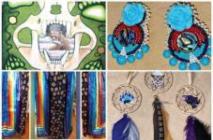
Koren Smoke and local Indigenous artists from Alderville First Nation host an exhibit and sale of paintings, crafts, beading, and jewellery at AV Ink & Art. Enjoy chatting with the artists and purchase something beautiful for yourself or someone you love.

During the festival, visit area libraries to see a slide show of The Northumberland Photography Club’s work or visit the offices of Edward Jones in Cobourg to see the original photographs on display.



https://www.tickettailor.com/events/northumberlandfestivalofthearts/708477
by Lorelyn Morgan, Apple Route Studio Tour.NFOTA is excited to partner with Apple Route Studio Tour, September 24 & 25, 2022.

It all began in 2017, when a couple of artists residing in Colborne learned that federal funding might be made available to help celebrate Canada’s sesquicentennial. The money had to be spent on community activities as opposed to infrastructure or capital investment. “What about a studio tour?” the artists said. “What about a studio tour centred right here in Cramahe Township?”
It must be acknowledged here that Northumberland County already has the Northumberland Hills Studio Tour, which has run successfully for many years, but that tour tends to centre around Port Hope and Cobourg, eaving artists in the eastern half of the county often feeling underserved.
Very soon it became apparent that there were enough artists with enough interest to make a local studio tour a viable idea. The funding application was made and granted, a steering committee formed, and the first Cramahe Studio Tour became a reality on the August long weekend in 2017 – the weekend marking not only Canada’s sesquicentennial celebrations but also Cramahe Township’s 225th anniversary.
After successfully running the tour for two years, the steering committee decided it was time to expand the geographic parameters a bit, and in so doing, chose a new name in 2019: the Apple Route Studio Tour. Further expansion was planned in 2020, with an eye to including artists from the entire eastern half of Northumberland County, from Grafton east to Brighton, and from Lakeport north to Hastings. A graphic designer was hired to create a new logo, and a website was created. Excitement reigned! And then Covid descended.

Two years later, we find ourselves thinking that perhaps it may be possible to open our homes and studios to the public once again. By the time our steering committee was reforming, plans for the 2022 Northumberland Festival of the Arts were well underway, and we were delighted to be able to partner with NFOTA in highlighting the work of so many visual artists living and working in the eastern half of Northumberland County.

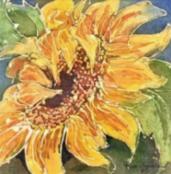

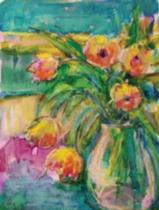 On the Piano’, mixed media by Elizabeth Vercoe Necklace of rubber & pearls by Abigail Connell ‘stand in fall’, acrylic & mixed media by Vera Litynsky
On the Piano’, mixed media by Elizabeth Vercoe Necklace of rubber & pearls by Abigail Connell ‘stand in fall’, acrylic & mixed media by Vera Litynsky
At its best, a studio tour should combine the fun aspects of a gallery hop, a home & garden tour and a road rally, and this year’s Apple Route Studio Tour will not disappoint. A total of 28 juried artists in 22 locations will welcome guests into their studios, workshops, homes, and gardens. Some are exhibiting in historic buildings. These artists all live in small towns and rural settings. They work in an eclectic variety of mediums – drawings in ink and graphite, paintings in oil, watercolour, acrylic & encaustic, mixed media, jewelry, fabric, fibre, photography, clay and mosaics. Visitors will have the opportunity to chat with the creators, and to view and purchase one-of-a-kind works of art large and small.
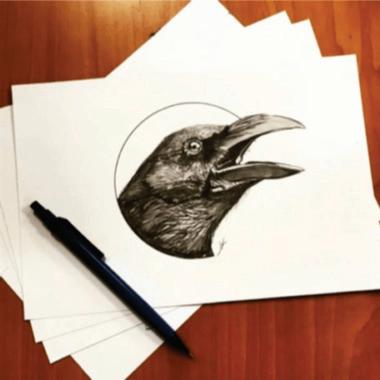


From Lakeport north to Hastings and from Wicklow east to Brighton, along the shore of Lake Ontario, through laden orchards, ripened fields and rolling hills – the variety of both the landscape and the art will astound you. We invite you to come visit and discover for yourself that visual art is very much alive and well in the eastern half of our county. The 2022 Apple Route Studio Tour will run on the middle weekend of NFOTA, September 24 & 25, from 10 – 4. Hope to see you then!
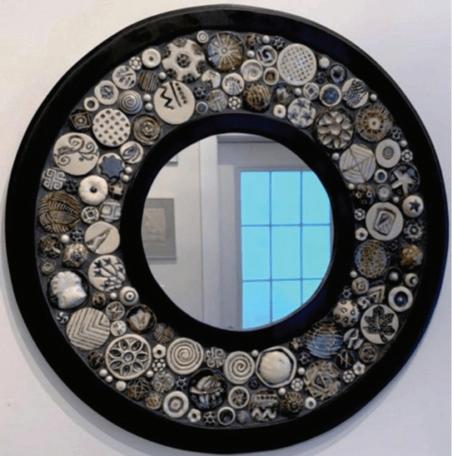 Mirror with hand-made tile surround by Lorelyn Morgan ‘Yum’, oil on canvas by Mike Peech
Mirror with hand-made tile surround by Lorelyn Morgan ‘Yum’, oil on canvas by Mike Peech

The Periphery Art Gallery is a creation of local artist Dimitri Papatheodorou, who says the space is a way for him to “conceptualize and materialize” his art practice.
The Periphery has taken many forms, from a studio to landscape space to a “Temple Mount” structure. “Periphery is physically and materially a place, away from the centre, but it is also a way of thinking of being in time and space,” said Papatheodorou in an interview with NFOTA’s Felicia Massey.
The gallery features a number of artistic works and projects of various mediums. Periphery’s recent NFT project, Seeking the Periphery, follows a common theme in Papatheodorou’s works to “reject the centre.”
“The original virtual exhibition was about image-based work that rejected the centre, and embraced the periphery.” The concept came about after an exhibition at The University of Toronto during the COVID-19 pandemic. After seeing the idea broadly interpreted by a number of international artists, he chose to work on the concept with five masters’ architecture students, two of whom approached him with the idea of exploring NFTs.
“… it was really the students that drove the NFT exploration - and about a year later we created an online gallery with ten established Canadian artists,” said Papatheodorou.
“My pitch to these artists was to treat the NFT project as an experiment. The idea of the blockchain is extremely intriguing as a means of broadening each artist's unique practice, [and] connecting their mostly analogue work with the digital realm.” Papatheodorou and The Periphery also run a number of workshops that help to enhance the already-vibrant arts community here in Northumberland.
Visual artist, musician and architect Dimitri Papatheodorou speaks to NFOTA’s Shane Joseph about “Periphery,” his Warkworth home studio/gallery, architecture, painting, Northumberland County, and finding home in his identity as a gay man.

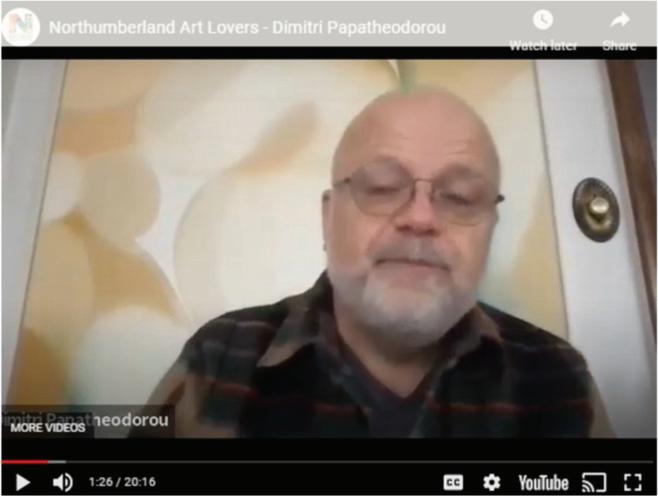
https://www.youtube.com/watch?v=gBs_9KhBlvo
by Felicia MasseyCharles Funnell is a silversmith and jeweller, whose works you can find proudly displayed at the Colborne Art Gallery. His three-dimensional designs and pieces work with a number of different materials to create wearable, “living” art. Funnell values learning new techniques and materials to further hone his craft. “Creatively, all I can do is push against my own boundaries and technical abilities, to constantly evolve, grow and interpret as an artist,” he says on his website Xude Designs.
“I believe that the problem-solving process is also key to my growth as an artist. It is through this process that I create moments of clarity and resolution that all artists struggle for as creative beings.”
Funnel is a board member for the Art Gallery of Northumberland.
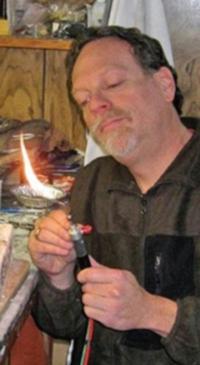
Rosie Riviera-Lopez is an artist and teacher in Port Hope, where she moved with her husband in 2020. She prefers painting water scenes/ landscapes with an array of techniques and styles, such as water colour. “Moving to Northumberland County gives me more landscapes and paintings by the water to discover,” said Riviera-Lopez to the NFOTA’s Cynthia Reyes. “I love Northumberland’s country and enjoy the miles and miles of open air.” She works at her craft with the support of her husband and two sons, and the inspiration of her relatives who have passed away. “Painting my loved ones allowed me to work through my grief. Painting is definitely a form of therapy for me.”
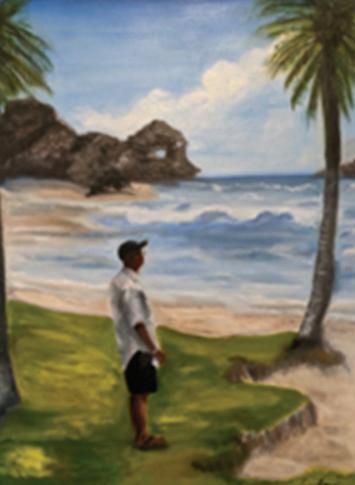

Jennifer Trefiak is a local First Nations artist who frequently incorporates her relationship to the land into her art pieces. Her “intuitive landscape” paintings are multidisciplinary and reflect her surroundings in the Colborne area. Growing up as a member of the Mississaugas of Alderville First Nation, Trefiak says she spent her childhood making art and exploring the outdoors on Lake Ontario. “I never felt like I fit in with other kids. But with nature I did. I was one of them. I was one with the trees and water,” she says on her website. “I ran around barefoot and climbed trees. I looked for wildlife in the wetlands and forests near my home. I spent endless summers at the beach. Here’s why I think the land speaks to me: we are all creatures of the earth. And because of humans, now is a time that nature doesn’t ‘fit in’.” One of her more recent artistic endeavours, The Soul Shine Series, is now available on her website. These paintings explore the theme of community through vibrant colours and dynamic landscapes.
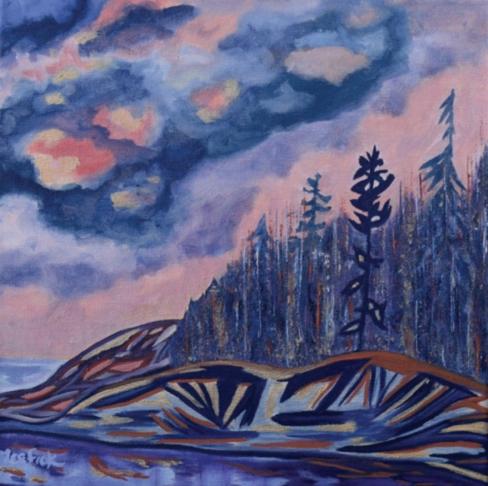
https://thecolborneartgallery.ca/
https://thecolborneartgallery.ca/


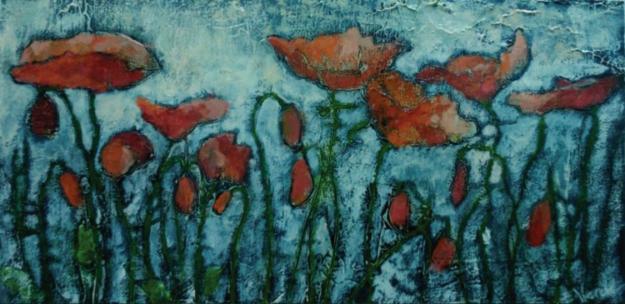


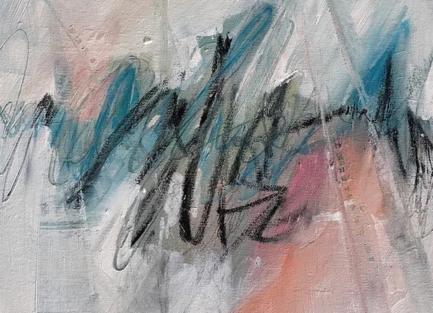









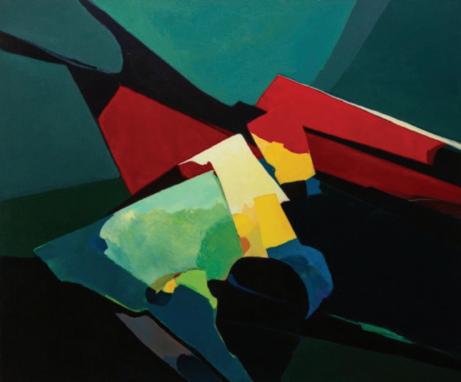
https://festivalofthearts.ca/literary-events/
For lovers of stories and poetry, NFOTA has literary events with local and regional authors and a visit from our National and Provincial Poet Laureates
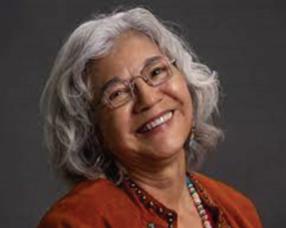
Sept 17: WOW! Words on a Wire: multi-media poetry event (Cobourg)
Words on a Wire! … Poets on a Stage! … a multimedia poetry performance featuring our national, provincial and Northumberland poet laureates, along with other award-winning and local poets coming together to embrace the lyric, massage the metaphor, and suffuse the surreal with jaw-dropping virtuosity. Whether you’re a lover of language or a fan of the broken line, come find out for yourself how words are worth a thousand pics. Poets will be available after the performance to sign their books.
Sept 17: Parade of Poetriots (Cobourg)
The glorious imagine nation of the Peoples Republic of Poetry has created a Picnic Table Anthology: poems embedded in the table top. The anthology will be displayed in front of Victoria Hall during Words On a Wire and then loaded onto a flatbed truck and paraded though the downtown to be gifted to the bookstore, Let’s Talk Books, where the Cobourg Town Crier will make a cry on delivery.
Sept 21: Celebrating Resilience: Fall Reading Series 1 (Cobourg)

Outdoors on the back patio of Let’s Talk Books
Independent Bookstore, relax and listen to local and other authors read from their latest books. Readers include Vickie Delany, Canada’s “one-woman-crime wave” reading from her latest novel. Vicki is the bestselling author of over 50 mystery novels. Readers will be available afterwards to chat and sign their books
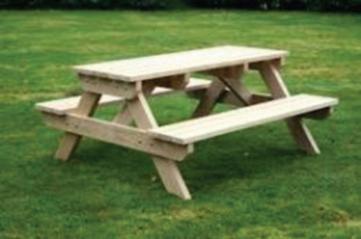
Sept 28: Indigenous Authors: Fall Reading Series 2 (Cobourg)

With National Day of Truth and Reconciliation just days away, join independent book store, Let’s Talk Books on the patio, for the second reading series during the festival, this time to hear from Indigenous Writers.
Sept 24 & 25: NFOTA Book Fair (Port Hope)

Family friendly CULTIVATE Festival at Haute Goat Farm on the weekend of Sept 24 & 25, welcomes the NFOTA Book Fair as a participant, partly sponsored by Spirit of the Hills. Popular children’s authors will entertain the kids at regular “Storytime” sessions so parents can browse the book tables laden with books of all genres and do some early holiday shopping.
Sept 27: Graphic Novel Kids Event (Port Hope)
Author Ted Staunton and illustrator Josh Rosen will take kids into the world of creating a graphic novel and share some stories too. Kids can ask questions and participate in a hands-on graphic novel activity.
Sept 29: Blue Denim Press Authors Night (Cobourg)
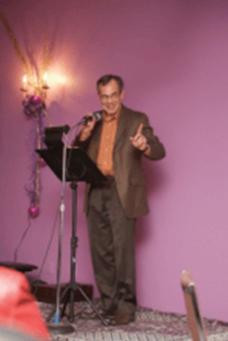
Refreshment in hand, join Blue Denim Press authors at The Mill for an evening of discussions on literature and readings from recently launched books. Learn about how authors coped and succeeded to create and publish their work during pandemic times.

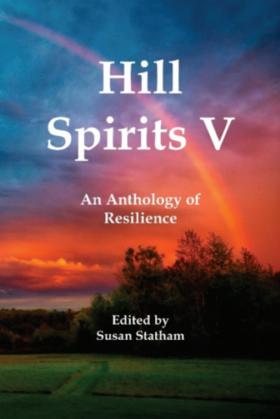
Showcasing 36 local and regional writers and poets, Spirit of the Hills Arts Association and Blue Denim Press present the launch of Hills Spirits V Anthology . Ticket purchase includes a copy of the book. Be entertained with selected readings, and mix and mingle with the writers.
https://bluedenimpress.com/
Blue Denim Press, a publishing company in Northumberland County, offers a number of writing/ editing services, including proofreading, manuscript editing, cover design and more on top of the trade published works they produce each year.

Owner and founder Shane Joseph has been publishing through Blue Denim in the Cobourg community since 2011. In collaboration with Canadian writers and local writing groups, such as the Spirit of the Hills Writers and NFOTA, Blue Denim publishes four works per year.
Joseph stresses the importance of community amongst the Blue Denim authors and through the arts in Northumberland. Speaking with Elizabeth Hammond, he said that The NFOTA’s upcoming Celebrating Resilience Festival is a great tool to bring the arts community together.
“The arts - painting, dance, poetry, fiction - are often fragmented into small groups, official and unofficial, and the Festival is a place to bring together creators from different disciplines in Northumberland County and beyond to showcase themselves. New authors, particularly those who are older, get a chance to promote their work, and readers have a chance to discover them.”
Blue Denim Press will launch three new novels at the Festival at a special evening on Sep 29th at the Mill Restaurant in Cobourg, and launch the anthology Hill Spirits V at Victoria Hall, Cobourg on Oct 1st.
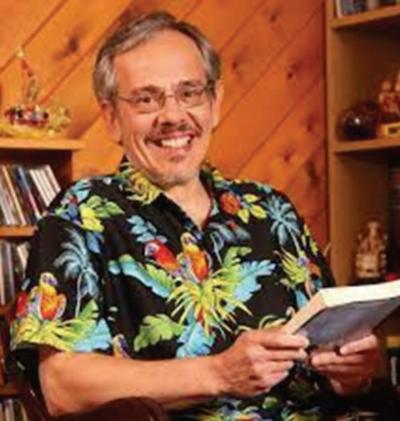
Jessica Outram is Cobourg’s Poet Laureate. The Métis educator and poet is the Principal of Indigenous Education for the Kawartha Pine Ridge District School Board while she writes and runs Creativity Coaching Canada. Outram is also the host of The Hummingbird Podcast, as well as the author of a number of books. Having lived in Cobourg for over ten years, and working with both SONG, the NFOTA and other groups, she remains a well-known poet in the arts community.

Outram’s most recent poetry book, “The Thing with Feathers”, came out in April 2022. Her upcoming children’s book, Bernice and the Georgian Bay Gold, is set to publish through Second Story Press.
“Art in any form from music to poetry to sculpture invites us to look at ourselves or the world around us in a new way. It can move us to nostalgia or to laughter or to debate. Art is a great healer.”
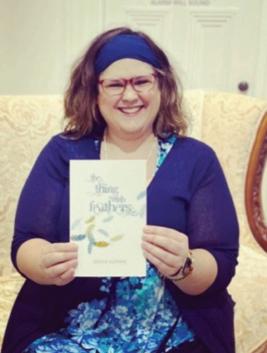
I am happy to be one of several volunteers supporting the Words on a Wire poetry event at the NFOTA. We are thrilled to welcome Louise Bernice
Halfe Sky Dancer, Canada’s Parliamentary Poet Laureate; Randall Adje, Ontario’s Poet Laureate and Jessica Outram, Cobourg’s Poet Laureate, along with a selection of local poets and the music of Marie-Lynn Hammond, who is a poet herself.
Poetry declares, I am here! During the pandemic the very act of writing poetry has been a form of resilience—the theme of the 2022 Northumberland Festival of the Arts
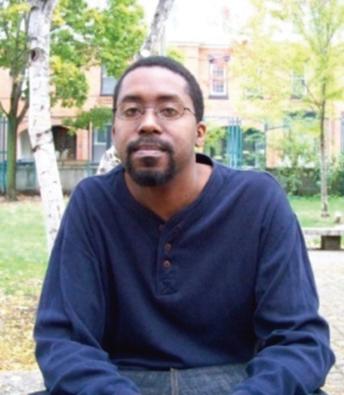
Words on a Wire! … Poets on a Stage! … a multi-media poetry performance featuring our national, provincial and Northumberland poets laureate, along with other award-winning and local poets coming together to embrace the lyric, massage the metaphor, and suffuse the surreal with jaw-dropping virtuosity. Whether you’re a lover of language or a fan of the broken line, come find out for yourself how words are worth a thousand pics. Poets will be available after the performance to sign their books. Sponsored by Horizon Plastics, The League of Canadian Poets and private donation, this program of poetry, music, and video takes place on September 17, 2022 at 2pm. This event is paired with a workshop from the popular Toronto spoken-word poet Dane Swan in the morning and the Parade of Poetriots after the show that will see a picnic table anthology delivered to the local independent book store (Project by Wally Keeler).

I invited a few local poets to contribute a favourite line or two from a poem written during the pandemic and to answer the question, Why Poetry? Here are their responses:
Jessica Outram, Cobourg Poet LaureateFavourite line from a poem I wrote during the pandemic in its early days: eye to eye she understands a story of transformation the gifts of seeing, the knowing of living
Why poetry?
To better understand my story and how it fits in the greater story of being human.
Gwynn Scheltema, NFOTA President
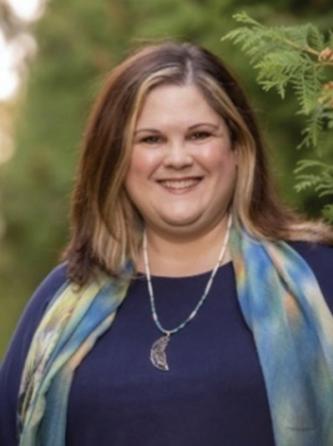
Favourite line/s: from the poem “Cliff Crying” written Spring 2021 hollowswallowing shadows inch from the cliff face frenzied seabirds caw a raucous requiem.
Why poetry?
I write poetry to capture the moments too small for prose and respond to the issues too big to ignore. Plus, I love a good wallow in words.
Lines from “Gratitude” by Katie Hoogendam
Does it seem like everyone is dying?/It does./And then you realize what a holy miracle/your grandmother’s one hundredth birthday was.
Why poetry?
I write poetry because it is the format most conducive to drawing both writer and reader’s attention close, microscopically close. Every detail–every word, every sound, every space, every punctuation mark–is intentional. Every tiny thing matters. In a world full of noise and thunder, poems are a refuge, a place where reader and poet both are allowed to indulge in the decadence of detail. It is a rare and fertile space indeed.
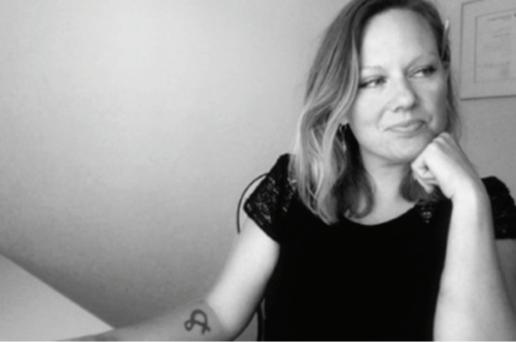
Wow — it’s hard to find one “favourite” line that makes any sense out of context! So, here’s a sentence from a poem called “Remembering.”
[The earth] remembers you are the tumult of hooves tattooing thunder on the shining plains…
Why poetry?
I’m primarily a songwriter, but with both lyric writing and poetry, I love the alchemy of words, how phrases and images can arise unbidden and combine to surprise, move, delight and transform. During the pandemic I’ve written more poetry than songs, because I’ve spent a lot of time in nature, and my complicated thoughts on humans’ often dire connection to the natural world tend not to fit a song’s concise pattern.
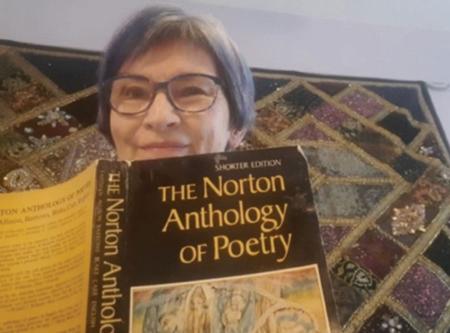
My favorite lines from a Pandemic Poem: I yearn for the day Amazon will return all the money I’ve given them (no amount of blushing will change what they owe me)
From my poem, “Thoughts Robust While Sitting Out the Pandemic of ‘21”
Why poetry?
Because it’s only poetry that gives me lines like these. I’ve tried with a paint brush, I’ve played with clay, I once had a guitar, but the lines never came out right. Words have a knack for being elastic. They also love to tell the truth, or they’ll have you lying through your teeth. If you find the right ones to place in the right order, words can put into the world something that was never there before. They’re that creative! Like the first line from my poem: I yearn for the day Amazon will return all the money I’ve given them. That’s such a loaded line. It tells a story, it creates an image, it suggests a voice, and it’s completely surreal, even absurd, because it describes something that will never happen in reality. And that’s why I write poetry, because it can filter reality through so many lenses and with just a few lines.
mia burrus

Favourite lines from a pandemic poem: Moon to Mila’s sun, soft autumn mist to her sweet summer dew, Elsie brings gifts from beyond, brings the beyond itself.
Why poetry?
For my granddaughters!
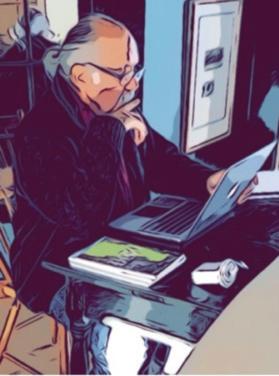
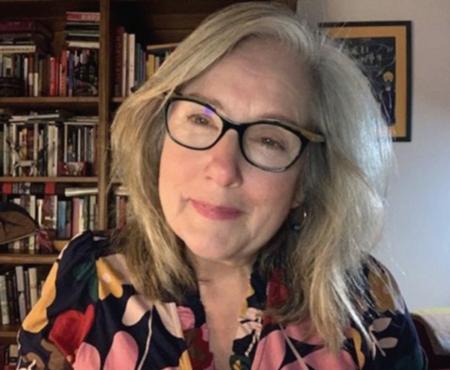
Favourite lines written during the pandemic from my poem “The Nose-ring Girl”: In front of Tim Hortons / most days with her supermarket / shopping cart. Two pyrite rings / in each nostril. /Her age— / Seventeen? Nineteen? /She stretches out her skinny hand, / palm cupped, for coins. / Her sleeve rides up, a bracelet of scars /binding her wrist.
My personal poetics often follow Margaret Atwood’s idea of poetry as “condensed emotion.” During my last ten years teaching tertiary level language-through-literature in Hong Kong I taught poetry of dissent to help my students express themselves during the tumultuous days of the protests. As a long-time resident of Hong Kong I wrote a lot of poetry of witness during the protests. Nowadays I often write about what I notice as a recently returned Canadian. Just before the pandemic began, we moved to Toronto to the downtown condo we owned there. During the first winter of the pandemic homeless people in the area were struggling to survive even more than usual. I was moved to write about what was happening to them just outside our front door.
Ronald Mackay – Writer by Felicia MasseyRonald Mackay is a writer whose work spans many mediums. His memoirs, anthologies, and monologues tie his rich and diverse past to his present-day knowledge and hindsight, offering anecdotes and solutions to puzzling problems from his past.
“I take a memory and I try to make sense of it in the light of who I am and what I know today.”
Drawing “from eight decades of life experience”, Mackay is able to resolve or better understand the experiences from the past through his story telling.

Since retiring from a 40-year career as a development project specialist that took him all over the world, Mackay’s memoir and story writing keeps him occupied where he now resides in Rice Lake, Ontario with his wife.

He has published multiple memoirs, including one in Spanish. In Fortunate Isle: A Memoir of Tenerife (2017), Mackay details his journeys as an 18-year-old boy in Las Palmas in 1960. Adventure, work and companionship are key themes in this story.
Wally Keeler – Poet“Trucks and dolls and Lego blocks are our very first metaphors, our substitutes for making real (or “realer”) our understanding of the world around us,” says The Poetician, Wally Keeler.
“In a poet’s mind there can be a new world order and it appears on paper and on the sides of transport trucks and as manifestos and in gleeful fabrications like ‘wire taps’ that serve no purpose but to confront and re-imagine. Metaphor: to cross over and go beyond where no one has gone before. Poetry can do that and never hurt a fly.”
Self-described as “a poemiscuous, a textremist, and with the objective of the policy of Poetry Proliferation to defeat mediocrity,” Keeler can often be seen on the streets of Cobourg, bringing attention to social and political issues through word play, as in this picture of poets, led by Wally Keeler, sanitizing the streets of Cobourg suspected of being in infected by mediocre poetry.
As part of NFOTA, Keeler, in the playful style of the glorious imagine nation of the Peoples Republic of Poetry, has created a Picnic Table Anthology with poems composed by poets laureate from Cobourg, and Brighton, the Parliamentary Poet Laureate of Canada and many others. The poems will be etched in the table top. The anthology will be displayed in front of Victoria Hall where “Words on a Wire” is being held. The picnic table will then be loaded onto a flatbed truck and paraded through the downtown to be gifted to the bookstore, Let’s Talk Books, where the Cobourg Town Crier will make a cry on delivery.
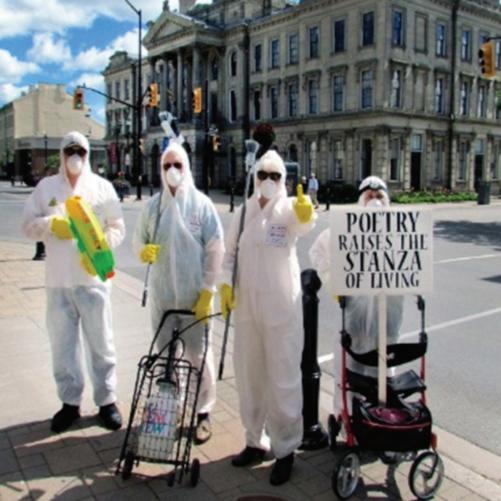

This journal, edited by Felicity Sidnell Reid and Kim Aubrey included the work of thirty-three NFOTA contributors. Seventy-seven illustrations and ninety pieces of writing (stories, essays, rants and poetry) were included in this full-colour book. The journal began as a blog for Northumberland writers during the COVID-19 pandemic, helping them to stay connected through art and stories.
“Our Pandemic Times provides a record of what we did, what we wrote, what we felt, and how we rose to the challenges of this uncertain year,” said Blue Denim Press, publisher of the journal.

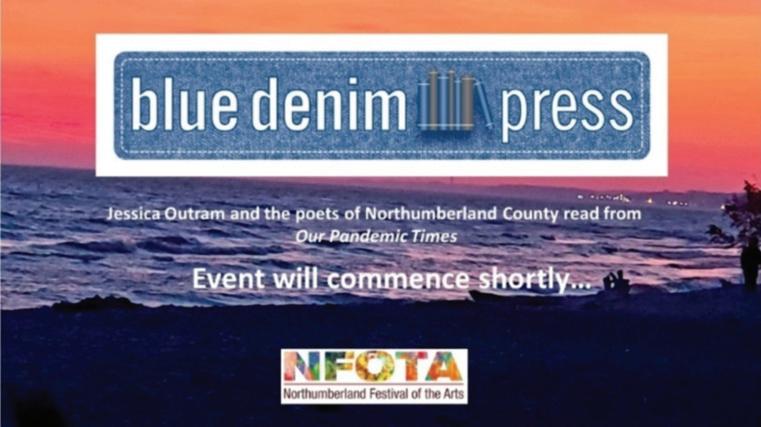
“We were in and out of lockdowns. We experienced personal difficulties related to health, finances, and the stresses of working from home, on the frontlines in the community, or from not having work at all.”
Click on the following links to view interviews and reading with the various contributors to Our Pandemic Times:
Poet’s session
https://youtu.be/BHz78k6vi1g
Prose session
https://youtu.be/RUGIeoDaqYY
So many artists and art organizations have historically done great things in artistic silos in Northumberland County. NFOTA wanted to collaborate and create a synergy so we can all benefit from pooled efforts and rise on the same tide. We are proud to partner and collaborate with galleries, art clubs, art businesses, libraries, choirs, musicians, singers, visual artists, writers, poets, dramatists and film makers.
Support from these organizations, businesses, service organizations, municipalities, government agencies and individuals ensures that NFOTA can build on the success of our last two festivals and continue to celebrate and showcase art and artists.
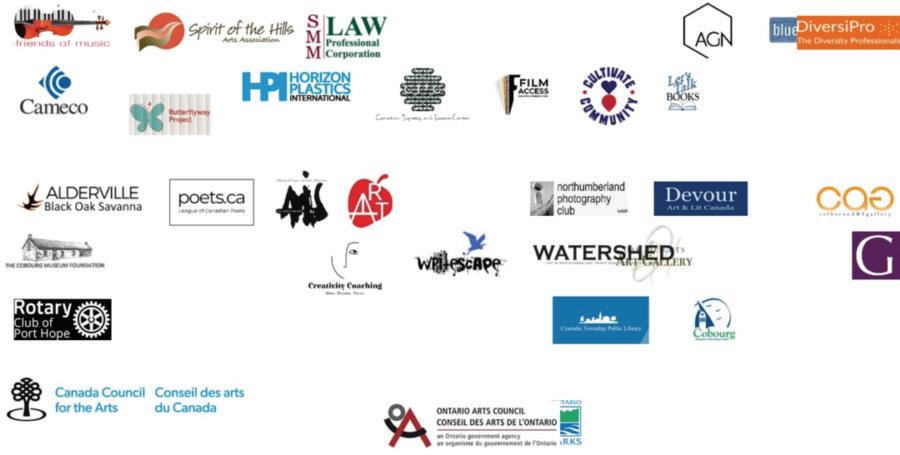
Many artists and facilitators are also donating their time and talent or performing at reduced fees to help make NFOTA happen. As they say, “It takes a village…”

 Photographs by Olaf Dijkstra
Photographs by Olaf Dijkstra
Olaf Dijkstra lives in West Kelowna, BC. He is originally from the Netherlands, but since 2011 a Permanent Resident of Canada. In 2000, he visited Canada for the first time. He said it was love at first sight. Six years later he started his application process and moved with his family in 2011. “You can say it was a ‘calling of the wild’ for me. Lots of space, nature, wildlife and ideal for me as I like to travel and take photos while travelling.” Every spring/summer he guides Dutch tourists through the province on a few trips.
Find Olaf and his pics at: https://olafincanada.ca/






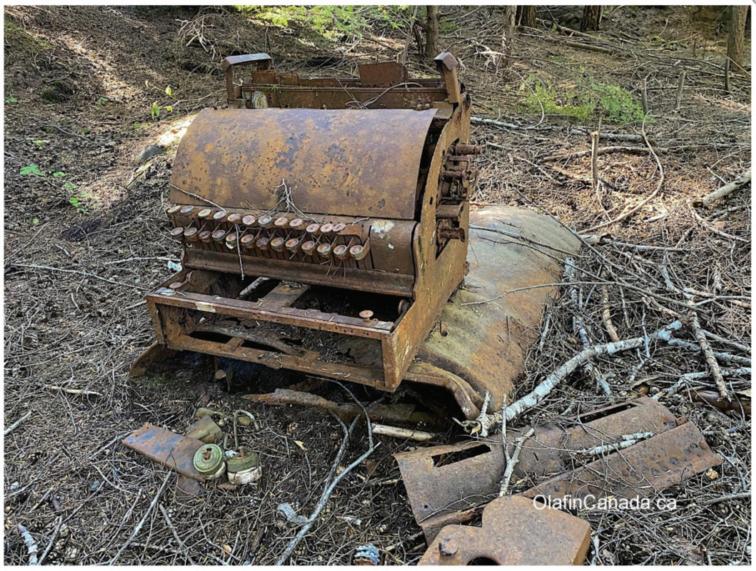









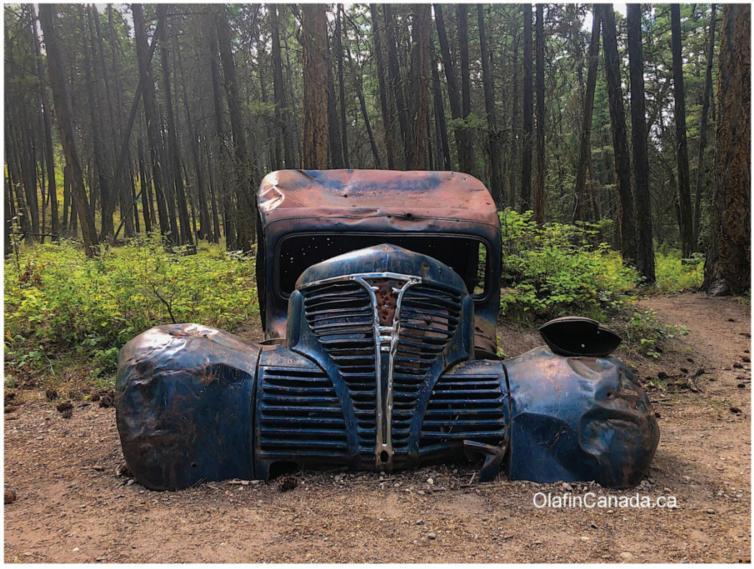

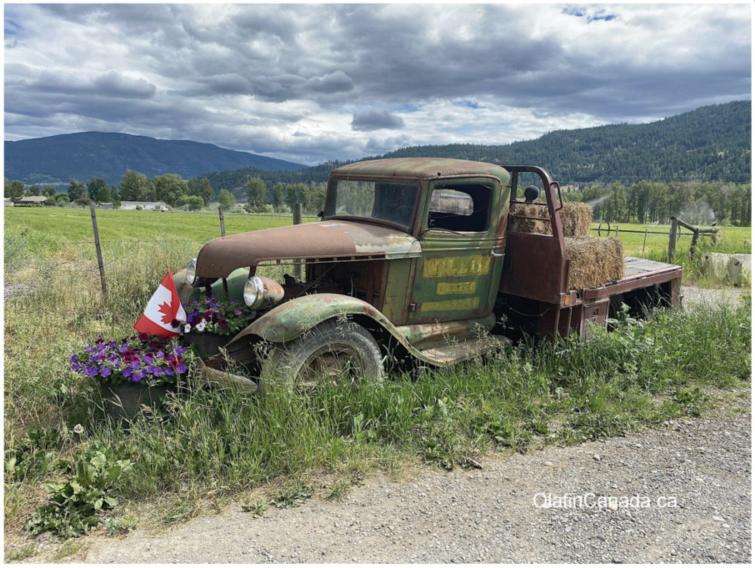

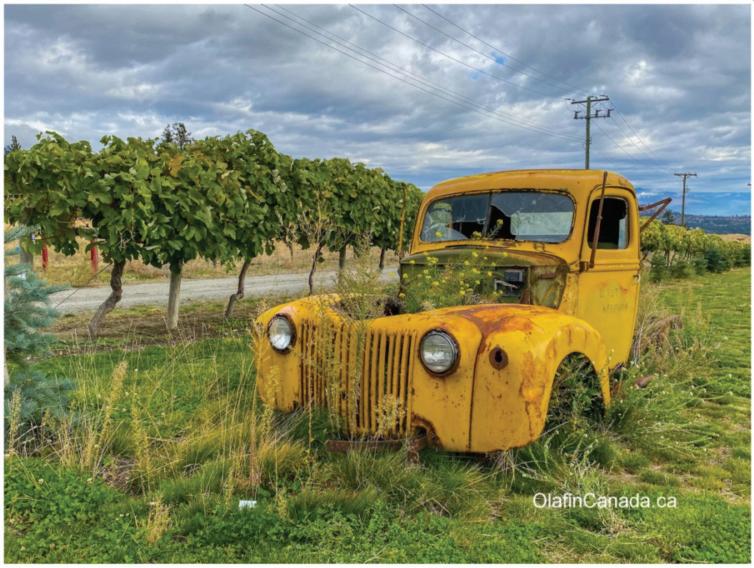
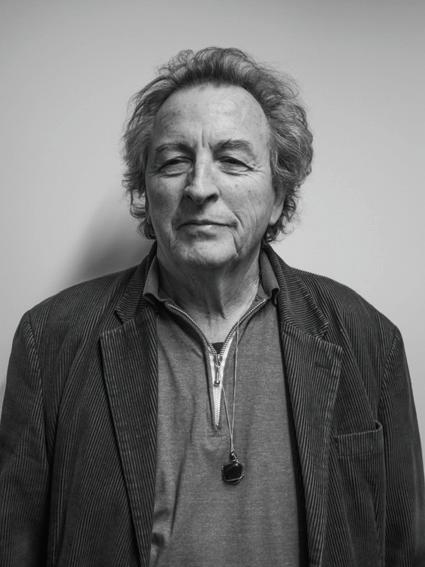
Bruce Kauffman lives in Kingston and is a poet and editor. His latest collection of poetry, an evening’s absence still waiting for moon, was published in 2019. He facilitates intuitive writing workshops, and hosts the monthly and the journey continues open mic reading series begun in 2009, and also produces & hosts the weekly spoken word radio show, finding a voice, on CFRC 101.9fm he began in 2010.
wall a side of a building a full limestone wall giving up portions of itself to allow brick to become and in it a window frame all then giving way to wood and it to glass
limestone tolerates but does not fully understand brick admires though its shiny red coat its slick fleshed sides
wood does not understand either mortar or stone but allows earth to translate
mica though sees through understands it all

an inner monologue after sitting at a table in an empty café with my journal purposely opened after a long absence from it
hello pen it’s been a long time
your ink
your blood to be donated now to the empty pages of this journal
my transfusion of self into as well as the pen reaches for page
beneath and after the days between
beneathand after even the trials and joys
beneathand after the bent open spine of this book
beneath a pen’s intuitive glide on the lines of a page
and beneath even that blood-ink on a page a poem comes into view
i sit on a bench outside ghosts linger they put on another face camouflage a voice a bird behind me pecks at a metal windowpane mimics footsteps heartbeat
i realize now that to say “ghosts linger” is a lie
to use those words suggests something once has leftis lost
there is no such thing as ghost
all of whatever once was still is alive today if we could only see
From the purity of an alabaster dawn, I was born on the wind and then it was gone. My voyage begun though I knew not where, My vessel’s hold laden with all I could bear.
The ship’s oaken deck glides above sailor’s graves Hinting at sapphires under the ocean’s waves. Spy the ebony yonder, the humpback’s hide. At the bow smoky dolphins breach beside.
White sails blowing full in broad reach, Emerald hills beckon from beyond the beach Where shore birds nestled in the tawny dunes fly Soaring free o’erhead in the electric sky.
The golden sun, its warm rays cascade On the sparkling ocean’s deepening jade, I tell my olde tales, a yarn, or a jive Pass on what I know, keep the sea’s wisdom alive.
I’ll sail on toward the amethyst dusk With nothing more than some rum and a rusk And endless cobalt fathoms toward the horizon My years float by as I become wizened.
Where will the wind take me on indigo tides
Deep in the night with the stars as my guides?
She’ll navigate into the saffron morn
Beyond the place where my dreams are borne.
At the end of my colourful journey’s conclusion
The Sea Maid will show me with no disillusion, The crimson and ember of the setting sun As another life on the sea is done.
carol@carolmackay.com
Qualicum Beach, British Columbia
The crows were pulling up the corn the marauders would be got but by some accidental manner a hole developed neither boy knew it was loaded.
Until then, I thought he’d been hunting rabbit because of two photographs:
cross-legged, in overalls, bare up to his calves on push-mown bunches of ticklegrass and clover. Puppy under each arm wriggling out of pose, out of the ash and lead of the photograph. Shirt collar up and curled, preserving the last starchless days of childhood.
On the same grass, holding gutted triumph in each hand by the hindlegs, right palm sharing the rifle barrel. Puppies now dogs.
In the end, or beginning, it was crows, not rabbits leaving his surviving sister half-lost.
Perhaps he would have clocked them, held them by jacket collar, the teeth of their zipper biting, fingers enamel white. Stay away from my sister.
But. I, myself, had three and none, not one, has held any collars.
So, in the end, the crows pull up the corn. Some names never carry forward.
chantellavoie@icloud.com
Kingston, Ontario
This is the unfinished place— rose petals eaten by wee beasties buds in trees and eggs in nests. It’s been finished, now coming back to prebeing. The birds have been birds and are egging it the leaves have been full and are furled again. The rocks are unforming to sand. Nothing stops. We blinked, and spring had run through summer and fallen. Everything had been born grown, and was dying again. In that blink, creases grew around our eyes and crevassed, lines filled and stretched as flesh swelled then emptied out. We blinked because air is dust and what surrounds us is a lot to take in and what is taken away seems too much to bear.
My darling, seems is not is. We are the pearls and the oyster. We are cast before swine and are beautiful swine. Also sand. Also stars. There is nothing we are not. We are and will be and will be. And will be.



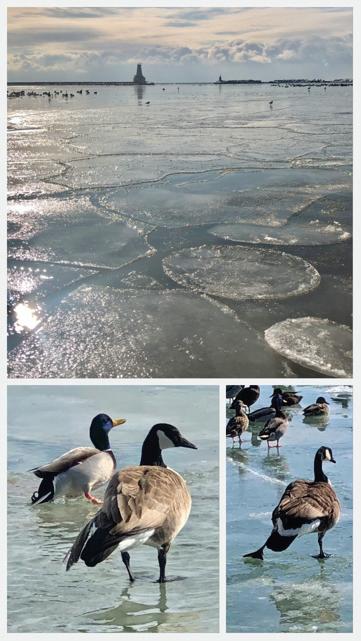

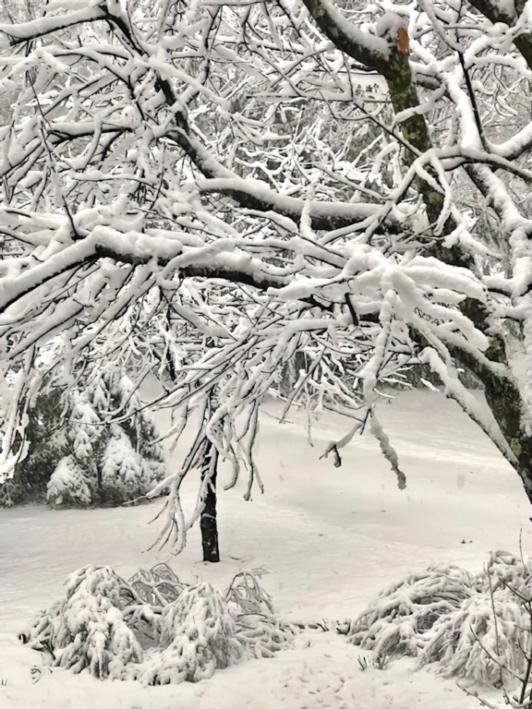


david.blaikie@gmail.com
Kanata, Ontario
Out of season why discomfort at such things long ago things not even done by me a tractor sound a neighbour in the woods the blood I chanced upon still wet upon the moss his voice a jolt behind me
I knew at once he’d shot a deer out of season so close that I could sense the body in the underbrush and that he’d come for it
perched on his high seat hands tight upon the wheel of that old Farmall
Seen any partridge? he asked his voice a raven circling Not yet, I said, and fled shotgun in hands through fragrant fir and birches and heard the tractor blurt again on that back trail quarry fetched, slinking home decades on the voice remains undead from his mossed grave that face, those eyes still hard upon me
tokayc@gmail.com
Kingston, Ontario
Footsteps, not lifetimes, measure the distance to the Shadow Lands, the Sprit Lands. Follow the path lined in red-wing song and breathe the air cooled by the river’s breeze. Walk to the water’s edge, and follow it up river. Arrive in your own time.
Continue for as long as needed –a dozen steps, a lifetime –and return with a heart too light to weigh against a feather. Although the feather may need to be weighed against your heart.
jgrahamd@rogers.com
Oshawa, Ontario
In welcoming spring happy robins serenade the dandelions.
littlepuricelli@gmail.com
East York Toronto, Ontario
Untitled
Two trees lay like chopsticks On the hillside
While i watch the sky and forest
i think how trees fall gracefully where They lived their whole life
phung7170@gmail.com
Beaconsfield, Québec
Pink clouds all gather at dawn to relay a command from the arid sky to the creative earth.
Go forth and write. New words in bright green begin to sprout out of the snow-moistened ground
then climb up the trees to fill in the blanks on bare branches
describing spring with utmost vibrancy.
All the anxious waiting brought earlier by the spell of cold and barren spring vanishes.

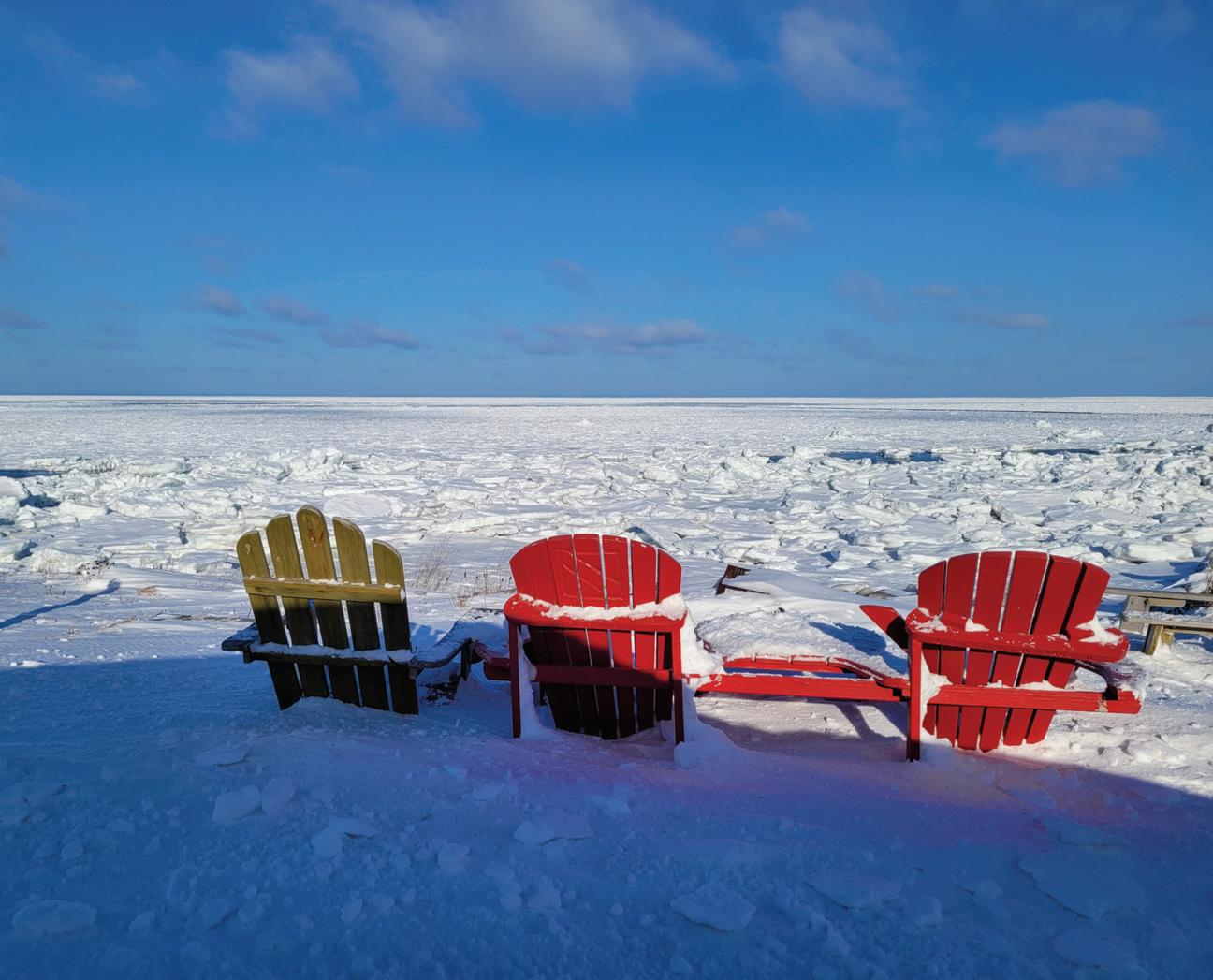

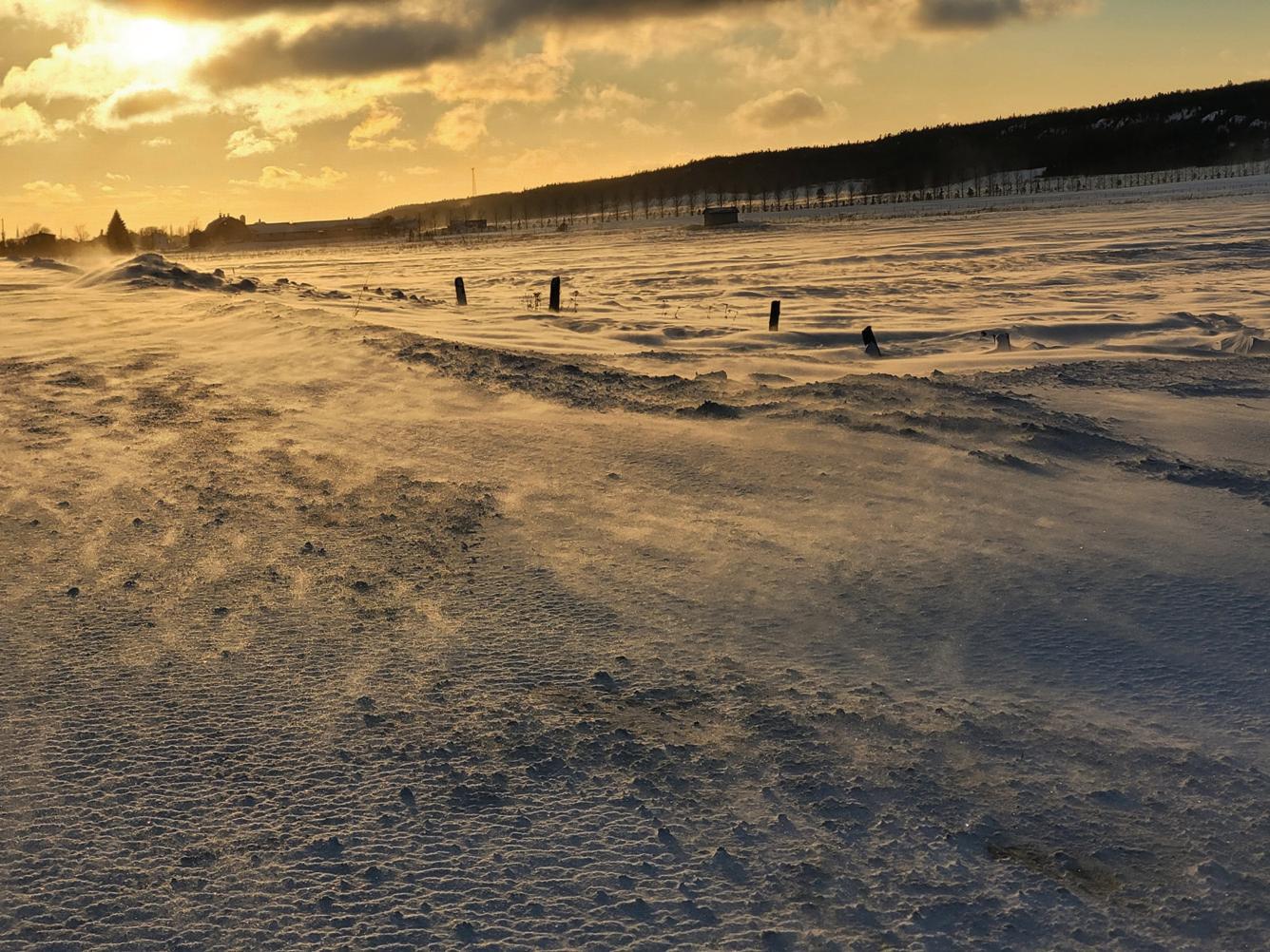

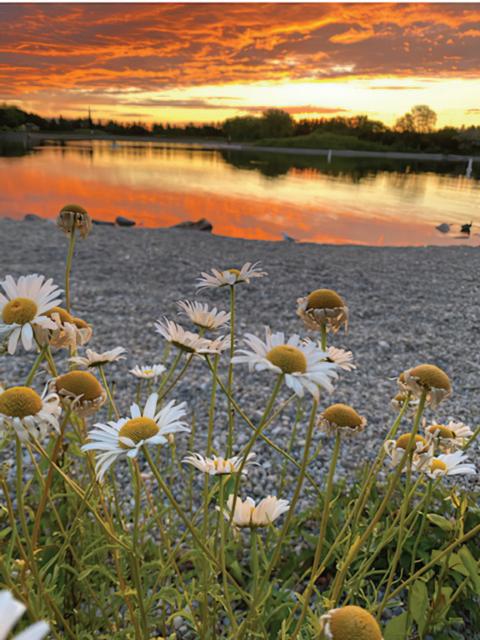

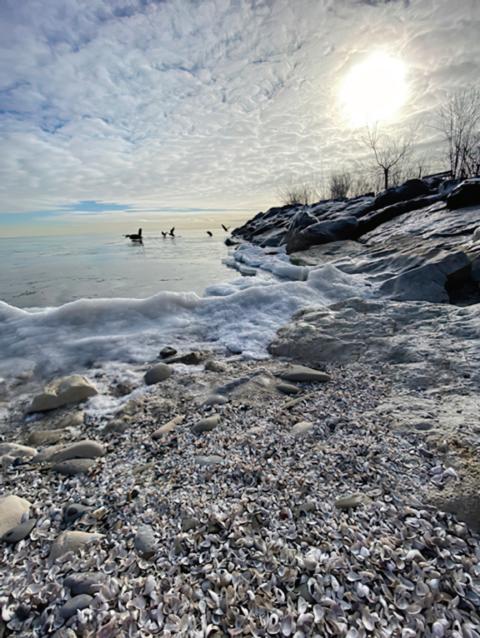
edwoods26@hotmail.com
Dundas, Ontario
Do you know homelessness? not of it, but in the first person It has a feel so rare
New taste in the air park lawns entertain the mind blades of grass a fascination Cement becomes a mystery mortar formulas of strength
Morning dew a nuisance wetness to greet sunrise If temperatures cooperate relief is evaporation if winter, crisp clammy shivers
As I patrol municipal streets late night adventures crop up now and then ridiculous to deadly serious
There is more to a street than the name on a post
sorstd@sasktel.net
The suddenness of it all was so confounding — all those paintings you never got to paint, all the gallery shows that will not happen –only an incomplete painting world remains, your finest landscapes never begun, just inner glimmerings of clouds on sky, light on water drowned in the sudden darkness.
Here at our oak table, I admire how your brush stroked this boreal lake into being, into a perfection of motion, colour and light, this painting you created precisely for this wall –
“I know exactly what should go there!” — knowing we loved the subtle mixture of water, sky and light as much as you, how pleased you were to be asked to enliven and enrich our home and our lives with the essence of your life and art.
Wrenched too soon from us, you leave unfillable emptiness.
Here, at this table in this home we, too, must share with time, I am lost in your lake, in the memory of your smile, your voice so close, that even if I am thinking of Jan Lake right now, I know you are there, too, your buoyant laugh echoing the exuberant joy you brought to us all.
gwynn@scheltema.ca
Havelock, Ontario
My hand chooses a colour and the brush makes shapes and I like a child watch an unfolding; watch the sudden return of brush to water and another dab of colour chosen, applied, covered, melded, repeated; watch an uncovering of light and faint music growing and is that the smell of leaves on a forest floor? Are there mystical creatures behind oaks in that forest? Maybe water cascading down a cliff face at the shore?
No, no, it’s the woods, definitely the woods. The wind whispers in the leaves, the soft tread of deer retreating. Where are they going?
Should I follow?
Then like a butterfly camouflaged on a flower, she emerges, daring me to engage.
What does she want; what does she know; what is she saying?
Will she follow wild things into purple shades, the blue and green light? Tell me brush, how can we follow; what wonder will she show me and my quickening heart?
Behind me your voice clangs: She looks like Princess Di, you say.
And light and heart and mind drain like bathwater through the back of the canvas.





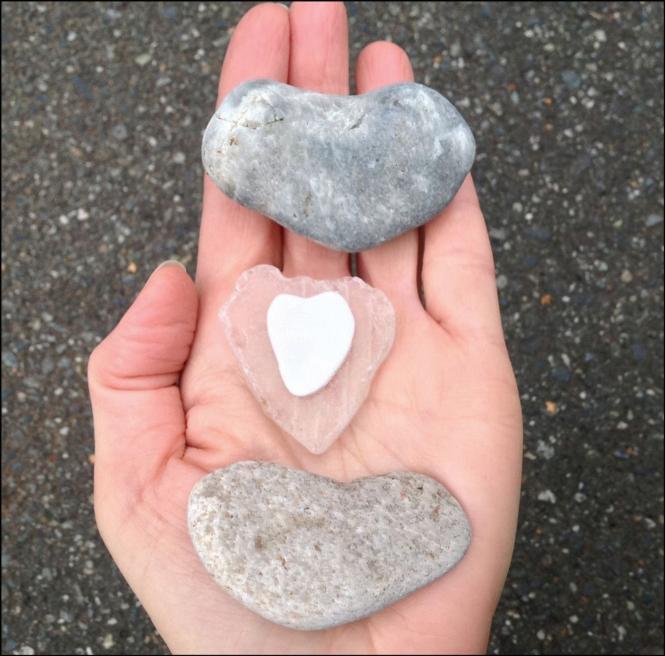
Iva


radosiva2@gmail.com
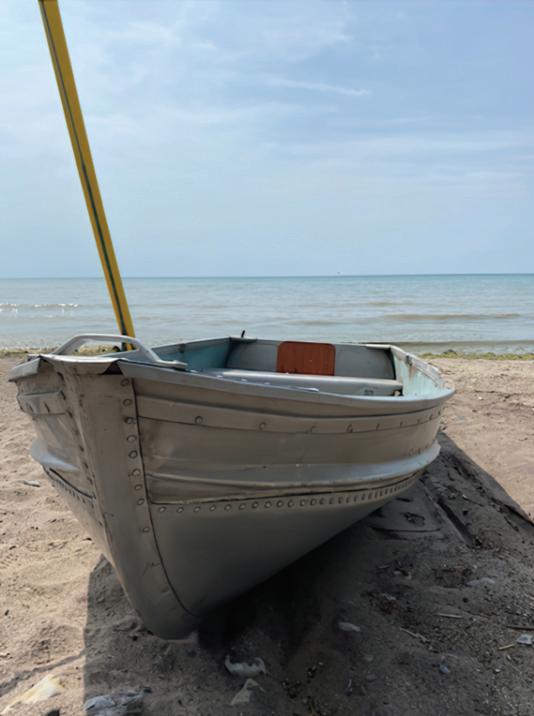

creativevocalizationstudio@hotmail.com
Toronto, Ontario
Tkaronto
When all that was available were the streets of Toronto
I walked, ran, sauntered and danced finding solace in parks, on the waterfront on pavement edifying life is worth living
Tkaronto, Mohawk, name for trees planted as weirs to catch fish to feed and sustain life
Toronto, Mohawk-modified, feeds and sustains me
In Oriole Park, a community of musicians and birds gather, each for survival, like the horned-owl trying to capture a squirrel, one observing the other
In Sorauren Park, line dancers gather to raise heart rates and camaraderie, building community Or High Park offering cherry blossoms and coyotes or Lake Promenade beach where a mother swan nurtures 5 swan eggs amidst buffeting winds
there is a grace in beauty amid storms and barriers it is in observance that grace is found and then acknowledged
it is in necessity that survival exists like a human animal, I exist to survive like a human, I am gratefulKatherine L. Gordon kanddgordon@porchlight.ca
Guelph, Ontario
There are still wild places where our manufactured city selves can melt, merge with a truth we belong to, only butterflies for eyes, birdsong for ears, wildflowers to overwhelm the senses, winds to sing away the closeted dust of us. We have forsaken green spaces built tumbled towers to separate us, leaving unsatisfied spirits to search for all that is missing to fulfill us. An absence of Nature’s cloak exposes us to unrest and war. A sanctuary for all saves us. Unite to restore the green, preserve trees and meadows, provide for every creature who shares the earth and skies, absolution and joy fills every heart that tries.
The loftiness of hardcovers, the slant of the soft; trade paperbacks like jaunty adolescents.
Tops of spines see-sawing along the shelves like kids in class pictures, some in growth spurts, others
yet to rise up. Like heartbeats spiking: What to keep, who to let go.
How to choose from a lifetime of collecting, absorbing the words of fellow writers.
Maybe a Selected of his, the Collected of hers, all the G. G. winners, for sure. Thirty-odd years distilling
down to a few dozen titles. Tape up the seams, sealed tight against the trickle-down of dusty plot-lines and
a plethora of grammars jarred loose, then stashed away, to be treasured by someone else.
Kingston, Ontario
The sky tonight, wide and dark, sparked in countless points of light, speaks multitudes: our Milky Way, one hundred billion stars, the universe, two hundred billion Milky Ways.
And stars have planets: four thousand, nine hundred and five new planets orbiting distant suns found so far.
Seeing one is like spotting a fly passing a lighthouse kilometres away.
Once a year in dark of night, days after a full moon, the sea just warm enough, the corals spawn, all at once.
Coral polyps release eggs and sperm. Countless white specks, float up through dark waters, an underwater snowstorm.
Joined, they form coral larvae, float down again for days, find a sunlit place, settle in to grow, The Great Barrier Reef refreshed.
Do corals spawn, we wonder, in strangely shadowed seas, seed colourful cliffs and crags budding in those faraway worlds discovered just yesterday?

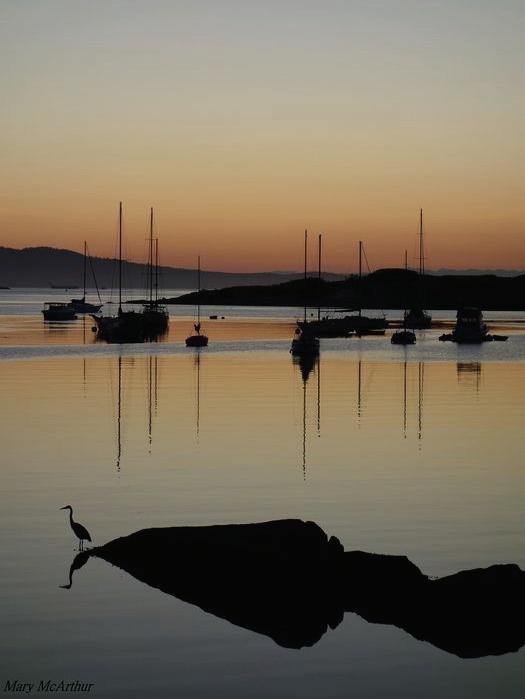

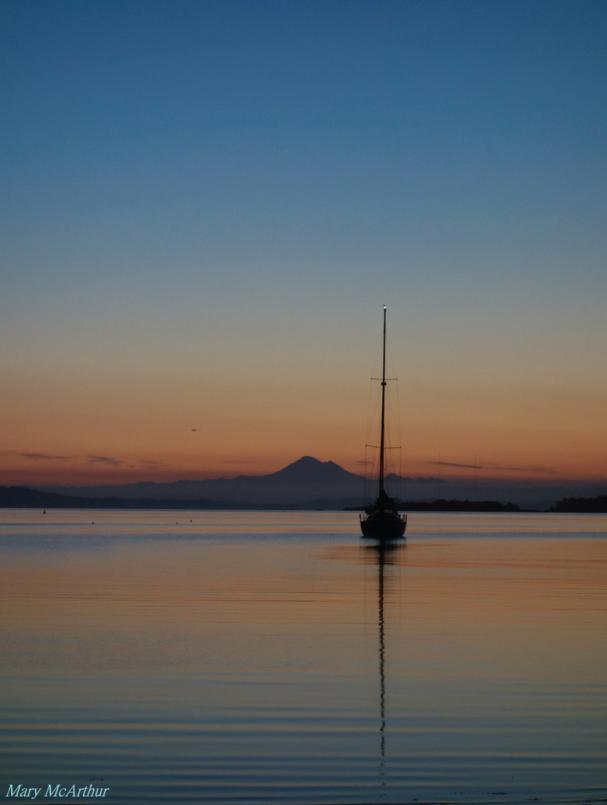

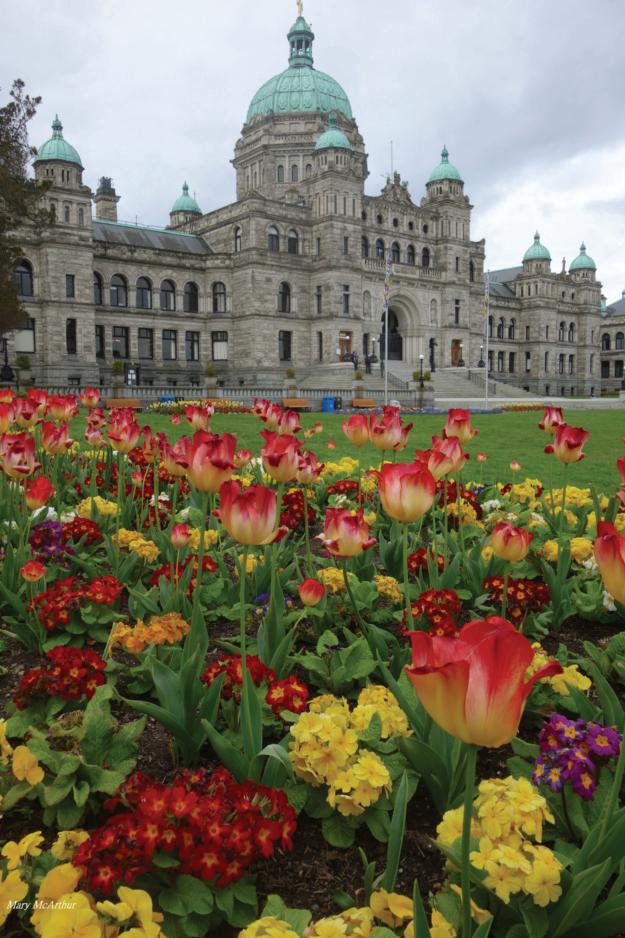
Iva Rados
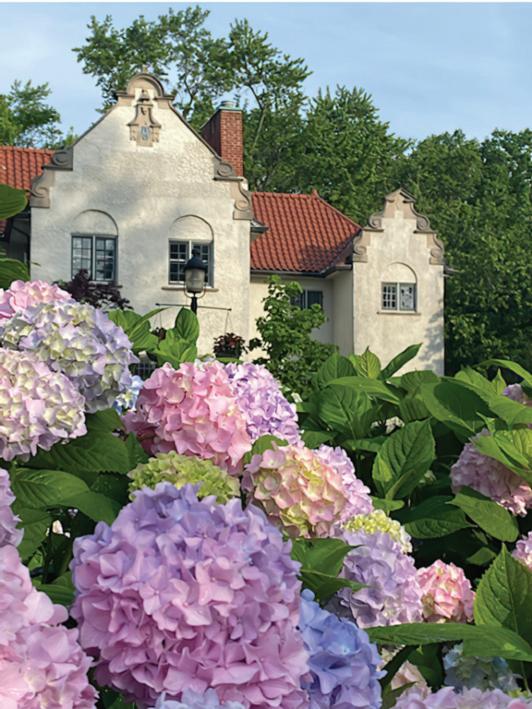
radosiva2@gmail.com

netindras@gmail.com
Vancouver, British Columbia
Forward
the strength to speak through slurs and move through atrophied muscle
I bet on the horse with the silver collar rode a bike like a silver dollar married the blurred instants until I screeched no one, but everyone, seems within reach can you carry me, tree? can you carry me, crow?
I am heavier than the sea and slower than the mountains my brain works in its jelly like a tarred fetus my neck aches from craning my eyes roil in discursion who am I?
the waves cannot drown nor the mountains run you sit at my side say you have nothing to look forward to
richard.stevenson@shaw.ca
Nanaimo, British Columbia
Bozho of Lake Mendotas, Wisconsin may be Champ and Ogopogo’s cousin –a saucy serpentine trickster rake spotted in Monona and Waubesa Lakes, maybe Kengonsa Lake, Mudlake too. Good luck catchin’ ‘im fer yer zoo.
Folks here have had enough yahoo types traipsing past their “No Trespassing” signs. Have started erecting fences to protect their favorite cryptid lake denizen. Well, what the heck, saurian or snake, ‘e’s got as much right to fish a lake
as we sorry ass homo sapiens do. So ‘e’s still a cryptid. Boo hoo. Leave ol’ Bozho alone. No cameras, cell phones. Park those prong-tongued devils at home. Let Bozho tip a few canoes, swat a few yahoos out of their doubting canoodling noodles.
Bozho, short for Winnebozho –Nanabozho, if you hail from farther north.
Civilized lake citizen: don’t trample the grass. Don’t leave empties or recyclable trash.
So, sorry, no selfie and serpent autographs. No science roll calls. No straining giraffes.
robertdmcurrie@yahoo.com
Moose Jaw, Saskatchewan
When I was a child, my mother lulled me to sleep with stories she made up of the Skyhorse that would fly me to a ranch on the moon. These nights
I read poems at bedtime, the day fading behind flowing words. Sometimes
when I wake from a dream, I try to slide back into the tide and ride
to a happy ending. Often now I sleep like a pet cat until my bladder protests
in the middle of the night. When I return to bed, my mind spins with the troubles at work.
“I won’t be in today,” said my absent coworker. “I’ll call back later with an excuse.”
When the house is quiet, no sound but warm air churning through furnace pipes,
I like to recall the times that I read “Winnie the Pooh” to my kids and how
children from a northern school wrote me once, telling me they liked my peanut butter poem, twenty-four letters packed into one envelope. All her life my mother kept in the basement trunk
a copy of a short story she‘d written, the story rejected by a New York agent.
The day she received the news, I wonder if she slept at all.
Sleeping and Waking has just been published in Currie’s collection called Shimmers of Light, (Thistledown Press, 2022)

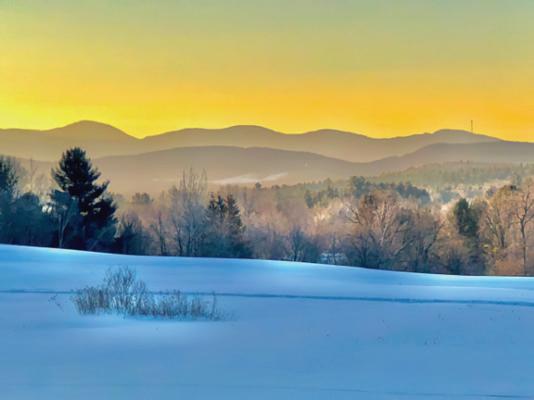
Iva






Toronto, Ontario
Here’s to the life we find in what was left for dead Here’s to redemption however whenever I raise my glass to the water where we thought there was an empty well
To the hand we touch when we’re reaching for a stone
Here’s to the work of faith that keeps it going when the last effort has failed and the next not yet begun
I drink to the questions we get when we finally find one answer
To hope that is the wind lifting dreams aloft when jackboots squashed them in the mud when the lash fell on slavery’s back
I raise my glass to the courage it takes to be yourself anyway and let others do the same
May we be at peace with the experiences of our lives
May our evils fade and our good works outlast us
May our challenges be the making of us
May we always keep a place in our hearts for the promise of peace
This poem is included in Robert Priest’s new collection, “If I Didn’t Love the River”, set to launch with ECW Press in the fall of 2022.
In the gravel along the path the pilgrims’ words blend in with the other bits of earth quarried by hand and remembered by feet.
The mountains are present in each pebble. Worn down by generations of excavation and extraction, they have not forgotten the covenant from the moment they first rose from the waters.
They are ancestors of loam and grandmother to generations of soil and the sediment of dreams of stone fences around green fields.
The fossils still sing the hymns and lament the changes that left them behind.
I feel them chafing as I walk with the pilgrims and complain because a stone in my shoe is making it hard to remember the good news.
essaysmith69@gmail.com
They wake me with their foggy moans fashioning a ring on top of the ladder I left propped against the balcony wall looking something like a tree.
Through the glass, I watch him pass supple rootlets while massaging her back with his feet. She squeezes around the narrow space, tail plastered on the wall, pokes each strand through the weave.
I picture their clutch of eggs spilled and spattered on the concrete floor, wreckage of a whole generation.
They’ll get over it, I soothe, they have time to build again. Both flap away with that distinctive panic of doves, arrhythmia of the heart.
I throw their fine start down to the lawn hoping sprigs can be salvaged, turn the ladder on its side hide it with a long garden bin.
Then I make myself watch for hours as the gentle pair return to survey the impossible ruin of their world, as unable to reconcile themselves as I am to my own fallen trees.

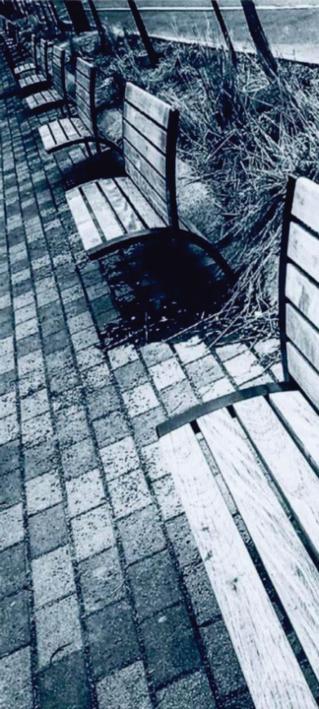

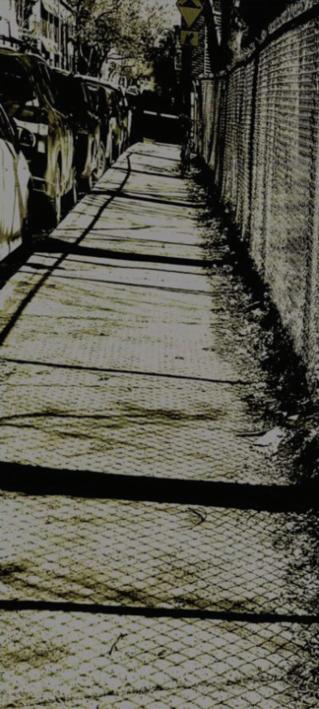




thallartist@gmail.com
Scarborough, Ontario
We haven’t stopped the seasons – yet, those magical swirling tides of change, signalling great flocks to majestic flight; mysterious wanderings in the night.
The sun sits high or low and all of springtime’s tiny, budding shoots depend on how much generous light might flow. Then, when does winter end fantastic crystals formed upon this planet’s rim? We do not know how to begin the summer’s healing glow, unfurling warmth, embracing continents as rays move up and down meridians. Clouds still rule the skies commanding blue, dispensing misty rain across the ocean’s vast domain. How? Earth still spins within its tryst and all of life responds. For this, I exalt the heavens!
poetician1@gmail.com
P.O.E.M. TV Muse@11
“The Voice of the Imagine Nation” often reports escape attempts. Fire is shown leaping from the windows of buildings small and tall. It’s often described by an excited mouth voicing clichés. A victim leaps out of the flames, falling to the bottom of the screen, splatting behind the news roll.
Humans built fire escapes in a vain attempt to fool fire to flee to the ground to face a gang of fire fighters.
Humans thought fire might be able to read so they mounted EXIT signs by fire escapes. It turned out that fire could read. The signs facilitated fire’s escape from confinement, not to the ground, but up into the vast ocean of oxygen. Fire, like all living things longing for liberty, loves oxygen. Freedom is the fire we always wanted to play with.
sally_quon@yahoo.com
Kelowna, British Columbia
Enchanted
She knows how to forage for berries and Labrador Tea, how to dress a moose, set a trap.
She names the birds, flowers, trees, knows which mushrooms can be eaten, or not.
She carries salt in her bag.
Singing life from earth, she bottles it like sunshine to be opened on a cold winter’s day.
Bare feet root her to the ground, all that she has, she gives. Her love is like that—
fierce, passionate, irresistible magic, woven in story, ink, and vine.

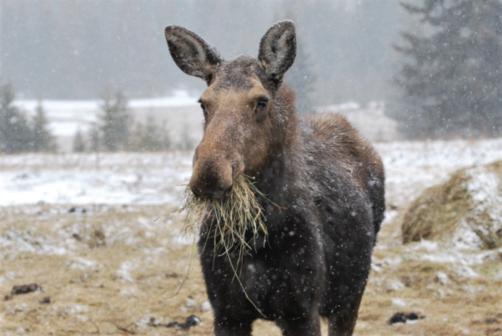

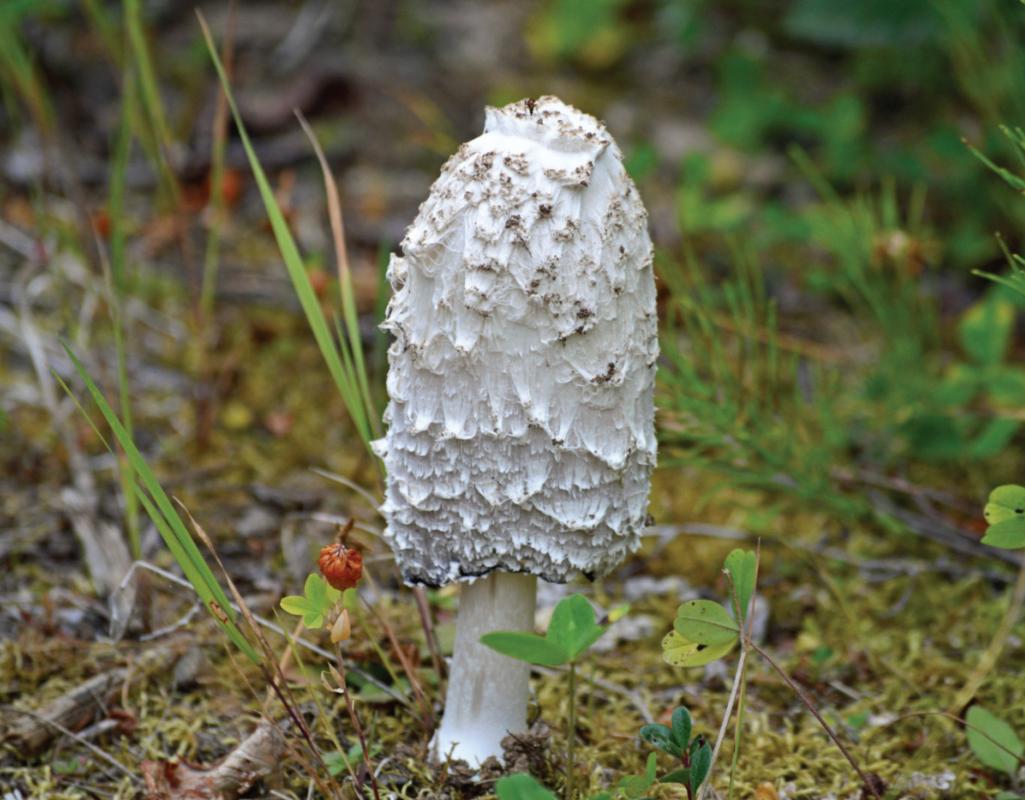



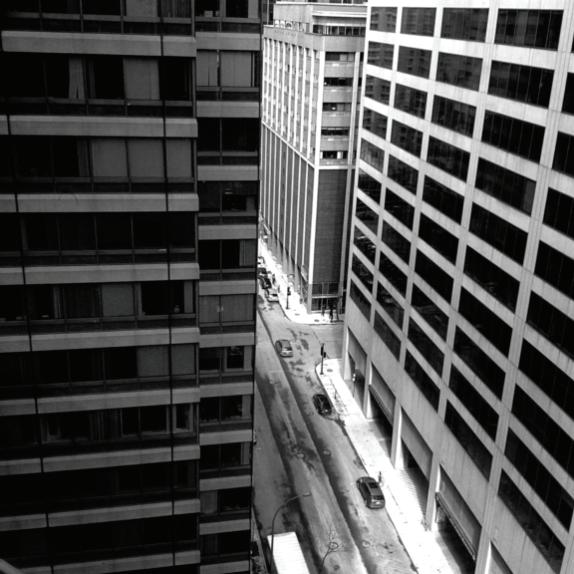

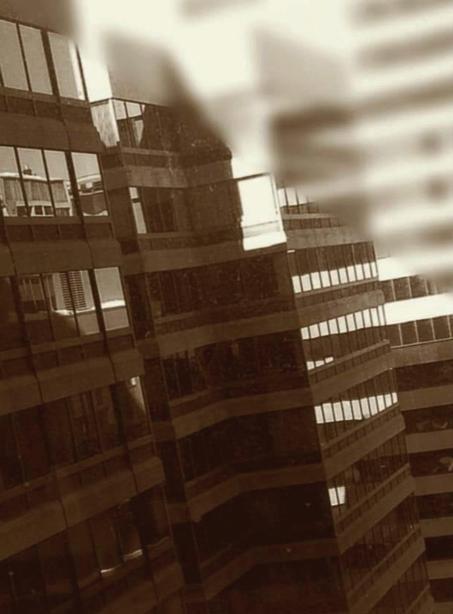

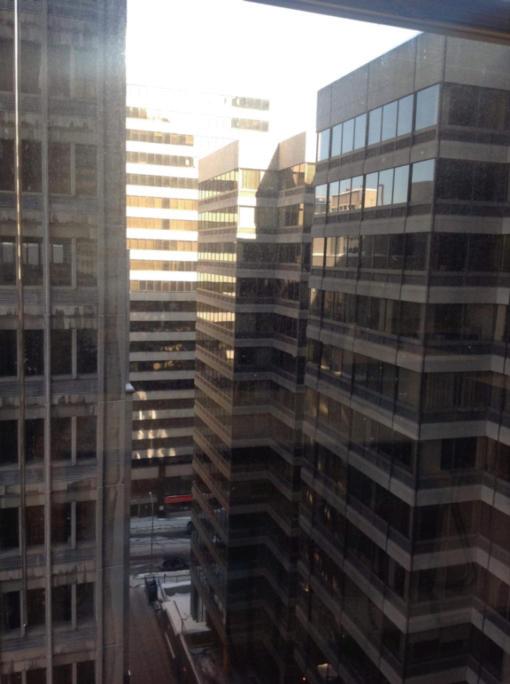

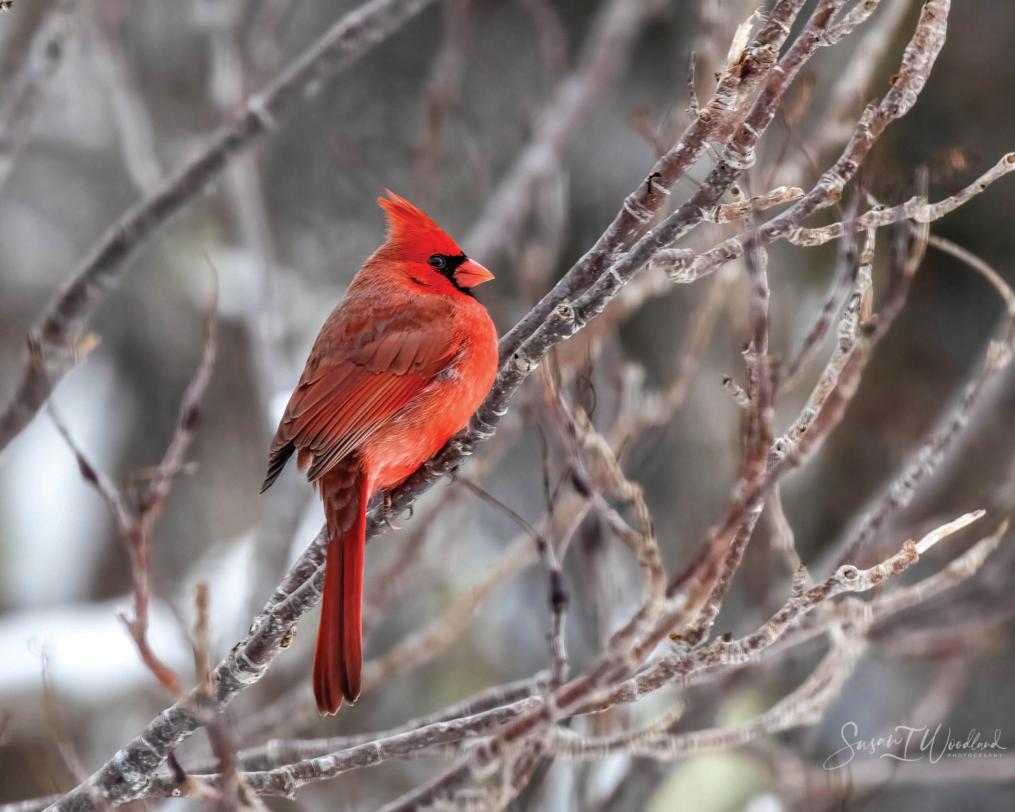
 Shane Joseph
Shane Joseph
Dear Readers:
As we head into summer, it’s time to kick back with a good book, whether a serious one or a beach read.
In this selection of reviews, we cover both sides of that coin— from family dysfunction, murder, romance, the humorous side of relationship break-ups, poetry, and Indigenous fiction.
I hope you will be tempted to sample these offerings.
Happy Summer Reading!
Shane Joseph Book Reviews Editor.
Title: Crow Winter
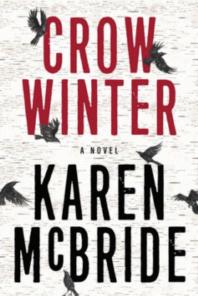 Author: Karen McBride
Author: Karen McBride
ISBN: 9781443459686

Number of Pages: 352
Published Year: 2019
Reviewed by Shane JosephMy first attempt at reading contemporary Indigenous fiction after the Canadian Truth & Reconciliation Commission’s report created a national angst out of past misdeeds committed by settlers upon their hosts in North America. The author stays true to the script we have all been given on what those past wrongs were and on how they should be righted, so I found little that stretched my imagination, despite this being a work of fiction that has more latitude to roam than a government commission report.
Hazel Ellis is a conflicted young woman. A recent graduate with a “very white, very male-centric degree” (not sure why she enrolled if she felt that strongly!), she has returned to the Rez to live with her mother and grieve the passing of her father a year and a half ago. She is angry at the white man, and the barbs fly occasionally: “white men always win when they tell our stories,” – fair enough, it’s payback time. She also has a spiritual connection with Nanabush, a trickster who reveals himself as a crow and carries messages to her from the Spirit World, where the Seven Grandfathers reside. These seven wise spirits are not always clear in their instructions— reminding me of the Greek gods on Mount Olympus—causing Nanabush much grief.
A grievous situation has arisen: the quarry on Hazel’s property, now owned by her and her absentee brother, Gus, is about to be taken over by a white man’s mining company, because it is recorded as surrendered land. From her work in filing old records at the Rez administration office and from trips back into the past with the assistance of Nanabush, Hazel discovers the heinous machinations of the former Indian Agent, whose great-great grandson is now the mining company executive in charge of the proposed quarry mine. Hazel, with her supernatural powers, is the new Wonder Woman who can right the wrongs of the past. Nanabush, for his part, craves to be released from this flitting about between two worlds where he is respected in neither – he would either like to regain his human form or die and head off into immortality. The Seven Grandfathers too have a vested interest in the mine deal not going through.
We get the tourist’s version of a very long and accurate sweat lodge scene, which might be boring to those who have experienced one, and educational to those who haven’t. Life on the Rez is described in detail – great for those of us who don’t live in one, but quite resembling small-town living in Settler Canada, for the accoutrements of daily life—clothes, groceries, food, cars, and entertainment—are the same. There are also more than the required “dead” moments when we are either embroiled in domestic scenes between mother and daughter, or in dream sequences, or in Hazel’s peregrinations around the Rez– great for those seeking saccharine, boring for those wanting the novel to get off its ass and get going.
The author correctly includes stereotypical Rez characters like Heath Whittaker, the big, bad, greedy Indigenous construction guy who will sell out anyone for a profit, and Brian Howard, the ineffectual Band Chief, who will sign anything. Unfortunately, Whitaker and Howard are mentioned in passing and figure only as window dressing— they do not feature in the main story at all.
In her exalted superwoman status, Hazel, and her Man Friday, Nanabush, will prevail, and the author, politically correctly, presents the modern generation of settler as honest and ethical, conceding when confronted with evidence and the rule of law, making amends for their crooked ancestors who robbed the Indigenous of their land. The Commission’s remediation script is followed to the letter.
However, this being fiction, I was looking for something original that would go beyond the existing Settler-Indigenous state of affairs and stretch our imagination into new possibilities. For example, what if the under-characterized Whittaker had been the villain of the piece instead of the stereotypical Indian Agent of yore? Get my point?

Karen McBride is an Algonquin Anishinaabe writer from the Timiskaming First Nation in the territory that is now Quebec. She holds a bachelor of arts in music and English, a bachelor of education from the University of Ottawa and a master of arts in creative writing from the University of Toronto. Karen works as an elementary school teacher on her home reserve. Crow Winter is her first novel.
Shane Joseph is a Canadian novelist, blogger, reviewer, short story writer, and publisher. He is the author of six novels and three collections of short stories. His latest novel, Empire in the Sand, will be released in in the Fall of 2022. For details visit his website at www.shanejoseph.com
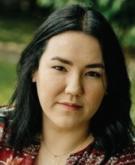
ISBN: 978-1777262129

Number of Pages: 252
Year of Publication: 2022
Reviewed by: Gail M Murray
Autobiographical elements combine with this author’s rich, creative imagination to bring unique characters and story to the page in Hawkin’s latest novel, Lure: Jesse & Hawk. She wrote the initial draft thirty years ago while enrolled at Trent University in Indigenous Studies and dealing with divorce. She admits “the main characters are closer to me than any I’ve written yet.” The inspiration came from her own desire for freedom and adventure after leaving her seventeenyear marriage. After growing up in rural Ontario, she and her teenage daughter drove 2600 miles over six days across the American MidWest to begin a new life in Vancouver. She loved the Midwest and sets this tale in a fictional town in Minnesota near a Chippewa Reservation. The bones of the original novel exist, heightened by a new mystery to solve. Hawkin’s previous four novels are mysteries and thrillers mixed with contemporary fantasy. Here she is heading in a different direction – romantic adventure – and she has succeeded in spades.
Jesse, an impulsive wildlife journalist, rents a cabin in the woods—something Hawkin has dreamed of doing—to complete her freelance assignment and heal from the loss of her fiancé, Alec, who died in an avalanche. Hawk is a rugged environmentalist and medical doctor living off the land deep in the forest, assuaging his guilt. At his partner’s urging, he’d agreed to a home birth but could not save her and carries the responsibility for her sudden death. Both main characters are dealing with emotional wounds.
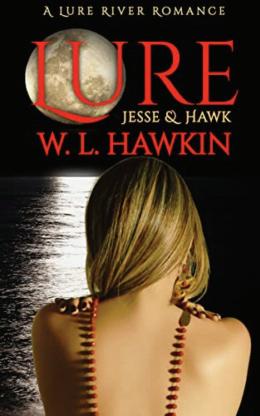
They meet by chance when Jesse is photographing a deer and Hawk’s arrow pierces its heart. Though he speaks not a word, the sexual tension has begun.
Lure means the power to attract, to the small town, to each other, and to readers who share their story. Building an undercurrent of continuous danger and suspense, this romance novel quickly becomes a page-turner, not unusual for Hawkin who regularly combines genres.
Lure will appeal to readers of Outlander with its passion, sheer rugged adventure in a primitive wilderness away from the confines of civilization, and with Hawk’s reliance on survival skills and Indigenous lore. He grew up close to an Anishinaabe elder named Joe who taught him well. Is there a little of Jamie Fraser in this handsome hunter adventurer—“his wavy blond hair hung long and loose well past
his thick shoulders . . . he was movie star hot” in his buckskin clothing and deerskin moccasins.

At times, Jesse and Hawk seem at odds, despite their attraction, but when Jesse attempts to free an otter from a rusted steel trap, falls against a rusted axe head, and is gravely injured, it is Hawk’s ability to integrate herbal and western medicine that saves her life. Here, Hawk softens and demonstrates his innate vulnerability.
Characters in Hawkin’s novels are often on a journey both physically and spiritually, and Lure is no exception. Jesse riding her Appaloosa on reservation lands heightens the natural landscape, and reminds us of her mistress’s mission to save animals by showing the world their beauty.
With fluid prose, vivid sensual descriptions of the lush natural world, and her well-developed characters, Hawkin has created a captivating read, while subtly making us aware of the plight of missing Indigenous women through the death of Ruby Little Bear. She demonstrates a reverence for Indigenous culture embodied in the dignity of Joe and the quiet strength of Chief Chase, and pits it against the violent, abusive Sheriff Flanagan, and the strangeness of Ira Griswold, an Irish ex-boxer and convict. Small towns aren’t exempt from crime, evil, and shady characters. Hawkin ties up loose ends and solves the mystery surrounding Ruby’s demise as we witness the healing love, not to mention passion, of our hero and heroine, and leaves us longing to read more of Lure River.
W. L. Hawkin writes myth, magic, and mayhem designed to inspire and entertain. Described as “intoxicating, lush, magically-edgy, page-turners,” her Hollystone Mysteries series features a coven of witches who solve murders using their wits and ritual magic with a little help from the gods. Wendy is also a published blogger, book reviewer, Indie publisher, and poet, with a background in Indigenous Studies and English literature.
Like Keats, Gail M. Murray seeks to capture the essence of the moment. Her writing is a response to her natural and emotional environment. Discover Gail’s poems in Written Tenfold, Blank Spaces, Wordscape, Arborealis, The Banister. Find her creative non-fiction in The Globe and Mail, Devour,Trellis, Heartbeats, Renaissance, NOW Magazine, Blank Spaces, Our Canada.
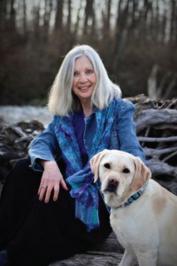
 Author: Sharon Berg
Author: Sharon Berg
ISBN: 978-9390202232

Number of Pages: 124
Published Year: 2020
Reviewed by Wendy MacleanIn each of the poems in Stars in the Junkyard, a breathtaking phrase or image shines, breaking into the narrative and biographical expanse of the work, with sheer beauty and wonder. These poems are a relentless probing of hardship, as Berg explores memories of her childhood and her years of struggle as a young woman and single mother. I am mapping the unlit areas within/internal shadows (Doubt). The poems were written over a period of almost forty years. Berg’s work is gritty and earthy, and yet there is a strange tenderness that also expresses a kind of gratitude and transformation:
Every lover has helped to release the woman inside me. Remarkable, as they all carved cruel tattoos on my skin. (Coming of Age)
There are many characters within the poems that will be familiar to Canadian poets, but I used GOOGLE to help acquaint me with them: Al Purdy, William McClure Brown, Robert Billings, Tilly Olsen, Sylvia Plath, Hugh McCullum. Each of these figures is part of the narrative of Berg’s life. They are among the “stars” in the junkyard.
As a reader, I found myself wanting to know more and more about what is forming this amazing woman, and her drive to create with words and in relationships. I especially liked the way she describes her babies, and the tension of exhaustion and longing of being mother and lover:
Close to exhaustion after tending the baby throughout the night somehow my dream-play joists reality. The baby mews for milk while my limbs are filled with the warmth of lusting. (Forty Winks)
Her babies are a haunting presence in the poems, as she remembers their fathers,
and her own desperate love and fear of loss. She captures a moment when her twoyear-old is in the bath and her brother calls: He longs for family, for mother-love for space on the raft I’ve built log by log/out of necessity. (Asking For My Hand). There is determination and strength in her response to his need, but there is also delight and sheer joy in her child, who “chirrs, musical notes of a slippery piglet.” The poems interlace events, people and memories, and the connections deepen with each reading. In the final section of the book, Odyssey, the subjects of the poems move onto a broader canvas, with tributes/memories of the Oka Crisis, slavery, the Atom bomb, genocide. Like the intimacy of the earlier poems, there is a profound interconnection of vulnerability and determination in her reflections. From the angst of being a lover and mother, the poems carry the same care into global relationships.
It is a twinned heartbeat that taps the rhythm to pace this journey. If I say I recognize you, it is because our shadows have gone ahead shoulder to shoulder in the river. The Earth itself is our task.
Remember?

Call it our gift. Listen to the river that chatters within. (Odyssey: Contemplations The Angels Have Not Left Us)
Let these poems pierce you with their artistry and stories, as they shine, as stars, in a world of words, where the junkyard is a treasure trove ...where you and I become the poem. (Metamorphosis).
Sharon Berg is Poetry Reviews Editor at Artisanal Writer. She published poetry books with Borealis Press (1979), Coach House Press (1984), and most recently Cyberwit (2020). Her fiction collection Naming the Shadows is from Porcupine’s Quill (2019). The Name Unspoken: Wandering Spirit Survival School (2019) won a 2020 IPPY Award for regional nonfiction
Wendy Jean MacLean is a poet, minister and spiritual director who draws inspiration from sacred texts, written in words and in the natural world. She lives in Brockville, Ontario near the St. Lawrence River. Her book, On Small Wings, published in May, 2022, was a Don Gutteridge award winner.
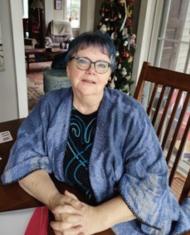
 Author: Haley McGee
Author: Haley McGee
ISBN: 9780385694766

Number of Pages: 392
Published Year: 2022
Reviewed by: Gail M MurrayThe title alone stops you dead in your tracks! At age thirty-one and newly moved to London, England, Haley McGee, Canadian actress, writer, comedian, finds herself with glaring debt, refused by the bank, and decides to sell gifts given to her by her exes. The gifts include a 10K white gold sapphire and diamond necklace, a bicycle, typewriter etc. So begins her project. With the assistance of gifted mathematician (Melanie Frances), called Gemma in the piece, as well as friends Fi and Milo as sounding boards, Haley speculates analyzing her many breakups in candid detail. She refers to her exboyfriends not by name but by their gifts, e.g. Mix Tape. As chapters alternate between reflection and her everyday life of improv and voice overs, her personality emerges and the tone fluctuates between tongue- in- cheek and serious.
At the beginning her chapters are hilarious; at times you can envision her onewoman show, her prose fluid, her delivery similar to stand up. I tuned in to her Ted Talk called Cost of Love to get a sense of her vocal delivery. It easily complements the memoir. If you’ve ever lived through a break up, this memoir will resonate. Millennials will be particularly entranced.
As she interviews her exes, “a process of distilling each experience to its elemental truth” (p128), this Ryerson graduate of Fine Arts asks what they took away from the relationship. Hayley works through the variables in each, such as life lessons, skills learned, and baggage. She experiences some nostalgia, yet attains closure and a sense of self. As she continues “milking my life for material that might be entertaining “(p102) while honing her show and attending ZOOM sessions with her therapist, she slowly starts to asses her current hot and cold long term relationship with journalist boyfriend T who can’t commit. She’s not alone in the world of love and relationships. Her friends have problems of their own. Will her roommate Navid relocate to Iceland for his lady love? Will her best pal Milo leave his relationship with
partner Juliet who advocates polyamory? Poor Fi, who wants a child, continues to miscarry. But the book is never a downer.
At the back, Haley lists her charts and formula. I found the Relationship Index illuminating. It includes questions such as: How reliable they were day to day? How much you liked their people? What was the quality and regularity of sex? Who broke up with who? Perhaps that is one reason Hayley is upbeat, for she is the one doing the breaking up. She even dedicates a full page to pointers on how to break up.
The memoir is unique as memoirs go, clever, witty, and poignant. It’s entertaining, thought provoking, and at times ricochet’s into self-help, offering a distinctly different slant on relationships. She is currently developing a new show called Age is Feeling. I look forward to securing tickets for The Ex-Boyfriend Yard Sale when it opens October 2022 at Soulpepper Theatre in Toronto.

Haley McGee was born and raised in Kitchener-Waterloo, Ontario. At seventeen she moved to Toronto, where she received a BFA in Acting and subsequently worked as an actor and playwright until she relocated to the UK in 2016. Heralded as "the formidable Haley McGee" (The Globe and Mail), her awardwinning, critically acclaimed solo shows have played in thirty-six venues in eleven countries and been translated into four languages.
Like Keats, Gail M. Murray seeks to capture the essence of the moment. Her writing is a response to her natural and emotional environment. Discover Gail’s poems in Written Tenfold, Blank Spaces, Wordscape, Arborealis, The Banister. Find her creative non-fiction in The Globe and Mail, Devour,Trellis, Heartbeats, Renaissance, NOW Magazine, Blank Spaces, Our Canada.

ISBN: 9780735281639

Number of Pages: 560
Published Year: 2021
Reviewed by Shane JosephWayne Johnston promoted this book as one based on his wife and her sisters’ history of parental abuse, thus creating a sense of curiosity in readers to pick this one up from among the mass of fictional intrafamilial sexual abuse stories that litter CanLit.

The author explains his own family story in a lengthy Afterword, and the parallels with the fictional story are very strong, even down to locales and character names beginning with the same letters as their real-life equivalents. In a nutshell, Hans Van Hout, Dutch émigré to Cape Town, South Africa and later to St. John’s, Newfoundland is abusing his four daughters and a host of other vulnerable women, while his wife Myra supports and protects him.
Hans Van Hout is the classic predator, an inveterate liar, a brag, a victim, and a professional failure. Under his ministrations, his daughters become, in age order: a nymphomaniac, a drug addict, an anorexic, and the youngest, Rachel, turns into a hypergraphic, hyperlexic bibliomaniac – ironically, the last three are the conditions that Johnston admits to suffering from as a young man. The story is told alternatingly from Rachel’s viewpoint and her boyfriend Wade’s (the latter being a proxy for author Wayne). Wade is preparing to become a writer by reading copious classics. Rachel is already a writer, scribbling voluminously whenever she slumps in and out of psychotic states, but she has no audience, for she does not share her work written in a reverse language called Aurellian. Alternating these two point-of-view (POV) narratives are sequences of poetry from Rachel’s diary called the Aurelliad and Hans’s rambling bedtime story to his daughters called the Ballad. I thought the poetry was superfluous, amateurish, and repetitive, but the author insists in his very explanatory Afterword that the Aurelliad is an attempt at selfexamination on the part of Rachel and the Ballad is a form of indoctrination and self-justification on the part of Hans. There is even a chapter narrated in Hans’s POV – I guess the author ran out of the means of how to convey a crucial event in the book and needed the villain’s help.
Another prominent character in absentia is Anne Frank, Rachel’s obsession, for despite her bibliomania, the only book she reads is Anne’s famous Diary, in many languages, over and over again. Anne’s Secret Annex is Rachel’s Aurellia – they are both inventing alternative realities to escape from the terrible worlds they live in. To compound things, Hans alternatingly writes in his Ballad that he betrayed the Franks to the Nazis, and that he also tried to save them by revealing their hideout to the Dutch Resistance.
The scenes shift between St. John’s and Cape Town, with a short transit in Amsterdam. Since the action takes place in the 1970s and ’80s, we are exposed to chilling scenes of Apartheid, viewed through the naïve eyes of Wade who has never travelled outside Newfoundland. Cape Town is beautifully painted, prejudicial warts and all, and so is St. John’s with its bitter winters that drive some people to murder.
After the dramatic whodunit revelation, the story continues to meander between Rachel and Wade, and I found this part lopsided, for one of them knows the whole truth and the other only half the truth. Perhaps, this is the situation that the author lives with today with his wife, for, as the Afterword reveals, nothing of the real-life abuse has been revealed to him although its occurrence is known, and he lives in a world of half-truth.
Johnston admits the book reaches no answers on child abuse, just like Anne Frank’s Diary didn’t on the Holocaust. However, unlike the real-life sisters who chose to remain cloaked in silence, the fictional sisters in this novel are able to redress the problem with their father, even though there will be much debate among readers as to whether their actions are forgivable or not.


Wayne Johnston was born and raised in Goulds, Newfoundland. After a brief stint in pre-Med, Wayne obtained a BA in English from Memorial University. He worked as a reporter for the St. John’s Daily News before deciding to devote himself full-time to writing. Both The Colony of Unrequited Dreams and The Navigator of New York spent extended periods of time on bestseller lists in Canada and have also been published in the US, Britain, Germany, Holland, China and Spain.
Shane Joseph is a Canadian novelist, blogger, reviewer, short story writer, and publisher. He is the author of six novels and three collections of short stories. His latest novel, Empire in the Sand, will be released in in the Fall of 2022. For details visit his website at www.shanejoseph.com.
Author: David Blaikie
ISBN: 978-1-989786-67-3
Click to find this book at:
https://www.wetinkbooks.com/publication/a-season-in-lowertown/
First Prize Winner, David Blaikie, enters my life with poems riding simultaneously wild, free and gentle in his A Season in Lowertown, a 2022 book of confessionary spirit that exudes history, involvement, search, blood, “sins”, deeds and aspirations nascent and in the making.
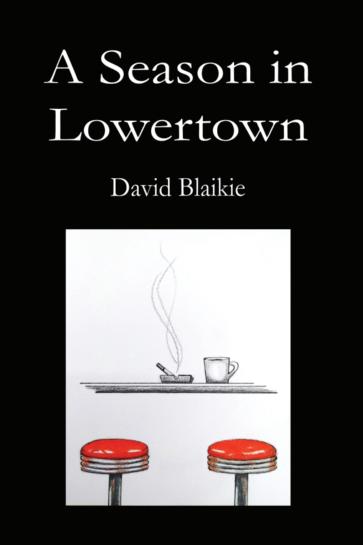
His biblical allusions in the Introduction impart an aura of gravitas to what is coming, which readers will feel bound to remember as they start their sojourn along Blaikie´s poetry. Hence, as both reader and reviewer, I felt the urge to pick up his line of thought and state right from the beginning that Blaikie has found in his work “a time to speak” as well.
Miguel Ángel Olivé IglesiasAuthor: Antony Di Nardo
ISBN: 978-1-989786-65-9
Click to find this book at:


https://www.wetinkbooks.com/publication/through-yonder-window-breaks/

I have had the privilege of writing and publishing about some of Antony Di Nardo´s previous books. I read and enjoyed Skylight and Gone/Missng. A poet “always… attracted to nature, as much as to the surreal and the absurd”, (his words) Di Nardo invites us once more to his constant experimenting and his unique style to write and play with meanings, words and sentences.
Di Nardo´s take of life and poetry defines him. He clearly states that “a poem should not mean but be.” This is what he does when he embarks on his journey Through Yonder Window Breaks. His poems ARE ergo they breathe and live. And in the poems, the universe – next to him (inside him) or far beyond – pulses and offers rich meanings even when he says they are not supposed to mean.
Miguel Ángel Olivé Iglesiashttps://www.wetinkbooks.com/2022-call-for-award-submissions/
Author: Wendy Jean MacLean
ISBN: 978-1-989786-66-6

Click to find this book at:
https://www.wetinkbooks.com/publication/on-small-wings/
Second Place Winner On Small Wings fills our hearts. I cannot think of more adequate ways to explain the spirituality it is endowed with. Yet beyond and above that inner spirituality fly colossal wings that flit and perch on the soul of every reader. This is a book to cherish and reread every time we are confronted with the riddles of life and death, the brittleness of living and the greatness of reaching out for hope and enlightenment in nature, in the simple things. Reading this fine book will take flight into what Sirett referred to as “… the profound beauty and transformative power of nature… Like nature itself, her musical words sing truth with a depth of inner joy, harmony and peace.”
MSc Miguel Ángel Olivé IglesiasAuthor: Mike Madill
ISBN: 978-1-989786-64-2
Click to find this book at:


https://www.wetinkbooks.com/publication/the-better-part-of-some-time/
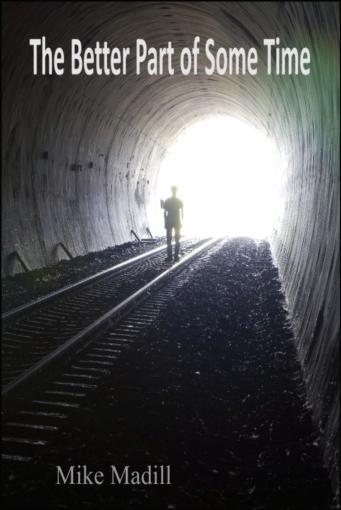
I could pretend I’m less alone, Ontario poet Mike Madill writes in his first poetry collection, The Better Part of Some Time, but the acknowledgement that it would be a pretense is what sets Madill’s writing apart from others who might tackle similar subject matter, such as a father’s death and the repercussions of unfinished grief. He loved his father with a fierceness that a lesser writer might embellish with some serious sentimentality, but Madill’s poems are clean and thorough; he writes with a chisel on hard rock, sparks flying madly around the room. Believe me, these poems are invigorating and courageous, totally attentive to language and lyric, and imbued with an honesty that is often stunning. They remind us that being human isn’t a multiple choice question.
Barry Dempster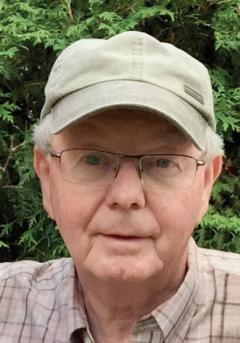
ISBN: 978-1-989786-67-3

Click to find this book at: https://www.wetinkbooks.com/publication/a-season-in-lowertown/
First 7 poems in the book
I worked odd hours then and drank a lot the bottomless drinking of being young and running from a place I should not have gone that day with her on a riverbank in wafting country air swearing it would be for life when I felt I’d hardly been born rebellion hissing like a fuse inside the times blowing trumpets in my ears Kerouac still alive then men about to fly to the moon and put big footprints there I’m not sure I was thinking at all, the minister in his collar so black and white with his Book of Common Prayer I still hear his voice intoning those ancient words if any man can show just cause ... let him speak now or else ... or else .... I do, I do doubt swirled like dust inside
I see it yet, that Dodge Dart day of powder blue and streamers elm trees nodding at an eggshell sky the river sliding away her eyes alight the wind soft in her hair and that white dress which sighed so on her body me, I had a chain about my neck that I’d put on by myself as I stood there in that quivering air of cars on summer grass family, friends, and god gathered round and heard her recite each word as if carving it in stone I told myself I’d settle in and we walked from there into life
she was all a man could ask a spirit unafraid and clear I’d look at her looking out at the harbour in the city where we started out waters choppy and gray below and I’d wonder what was wrong with me a thing that circled like gulls inside
I’d see those ships turn out and away, and be ambushed by the line of a song we’d drink, and go to bed
pour sex into the silence then rise and work another day I wore that yellow ring a while, but it burned like a coal on my hand we unravelled, sure and slow
five years later I was in a room and she was on the coast tall trees tilting at an island sky the Pacific at her toes a jet plane gone from the past and me the brokenness and blur I imagined her on a beach somewhere trying to untangle it all time lapping in from Japan a cove curling off in waves of light and threads of undertow she bought herself a car there and listened to Dory Previn Mythical Kings and Iguanas and pondered that poets could hurt her more than men who were rough and fucked on the floor
I took a room on Friel Street before it was Beausoleil a worn-out place that felt about right, furnished
to the specs of a classified ad which wasn’t much in those days
I found it on the morning of the night I left the last time the elevator empty going down the parking lot stilled below headlights switching at three a.m. through the black dark damp of going
I slept in the car with a bottle of rum somewhere in the Gatineau Hills pines and sumacs wrapped around me no memory of stars in the sky the engine off, the windows cold I wanted no one and nothing to find me
daylight hit the windshield pale a spider staring in at me as if sent by god and her I saw guilt walk with a thousand legs down a sunlit wiper blade dead bottle cobwebs in my head that car a cocoon and jail
I knew exactly where she’d be staring out a window seven floors up across an iron balcony the Queensway waking like a snake in the sun exhaust boiling up and away that rumbled sound of too many wheels
whirling in the gut of day and two yellow lines like pick-up sticks staring back empty by a garbage bin from the parking lot below
freedom doesn’t tiptoe in one easy bottle at a time or fall in notes of tidy sequence on the ear; it’s a pitiless thing when jarred this way a riptide rising in the folds of night crashing on the beach at dawn naked, defiant, full of glass a billion bits of memory flipping in the cold white foam and the booming voice of now calling in its wake this is what you wanted count it all
David Blaikie is a journalist and writer who grew up in Nova Scotia and reported for the Truro Daily News, The Canadian Press, The Toronto Star and Reuters. He spent eighteen years in the Parliamentary Press Gallery and had a second career in labour communications. He has published three volumes of poetry, Her Final Days, the story of his mother who died of AIDS after a blood transfusion in the 1980s; Farewell to Coney Island, winner of the inaugural chapbook award of the Tree Reading Series in Ottawa (2011) and In that Old City by the Sea (2017). He lives in Ottawa.
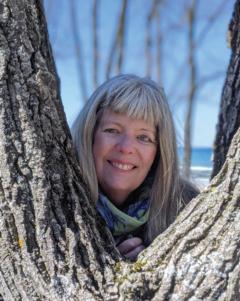
ISBN: 978-1-989786-66-6
Click to find this book at: https://www.wetinkbooks.com/publication/on-small-wings/
First 7 poems in the book
Be gentle with this moment. Feel the brush of its wings as it circles around you. Hold out your hand with seeds of hope. When it comes to you, let it rest. Be still. Hold this wonder. Be gentle with this moment. It has far to go on small wings.

In the balance of nature does this equinox festival of equal day and night measure with the same scales the homeless cold midnight hours and the luscious length of a lover’s kiss?
In the balance of nature does the red of a sunset equal the red of a fading rose or the bloody smear of birth on the head of an infant?
Is spring rain equal in its falling on the garden and its rising in the river?
Ask the wild ones. They will tell us that even the balance is out of balance. Seek justice, not equality. Tip the scales with kindness to give weight to our conviction that love always asks more of us because there is no equality embedded in nature, only grace, which is without measure shared in abundant blessing in the red of sky the waters of birth the love of neighbour and the promise of a new day.
To stream mystery, the composer listens for the echo of the monks’ quills illuminating the manuscript of heavens, with the ink of roiling seas chanting on the shore. The parchment is stained with notes transcribing planets for a cosmic lover.
To navigate the planets, and the noise of thought orbiting this fragile universe like brushstrokes on mulberry paper the artist watches
as the composer consorts with Venus and the violin turns hands to Mercury and bows to Mars.
Words cannot convey this ache of colour challenging the gospel with data collected from stars. The smallest sound is still a ghost on the screen, and I watch with my ears still tuned to read the body and the planets that revolve around a baton and a universe playing together.
The curvature of space is...reflected in that psychic curve whereby the entire universe reflects back on itself in human intelligence. Thomas Berry. Dream of the Earth.
In these curved promises of return a million expectations lie with winter’s worn losses and summer’s faded grace, all waiting for the glaciers to melt and the seals to come home. The ancient prophecies orbit overhead while in the garden, the tendrils and vines struggle to hold walls and stakes so their fruit is not devoured by rogue denial. This is the day of reckoning. The peas are harvested and shelled. At the table, the planets align perfectly, pods and gods in a blue bowl.
On a Friday in the Old Port dozens of schools come touring. Pods of children cling to teachers’ ropes to keep from straying from stern command and watchful eye. Caregivers push strollers with ten children at a time peering out at all the action.
At the IMAX theatre, the children are enchanted as the 3D galaxy fills the darkened space with stars. A thousand tiny hands reach out to touch them and gasp as their fingers fold around nothing but space.
Dust and light take us to the beginning: a cosmic nursery for the infant universe.
The children are at home here in this daycare for stars that hold onto ropes of dust when time starts to wander and stray too far from eternity. Children know all about squashed space and how time expands as they wait for a snack. Hubble imagines a new day and Einstein predicts strands of gravitational waves streaming out at the speed of light. Ask the children about the movement of stars. They will show you their hands open and close around nothing but dreams and a ripple of joy sparkling on a fall day.
Green me in this saturation of spring rain. Unfold yourself into this day. Un-pleat my soul. Dredge the dreary troughs of ego where judgement lingers leaving calcified clichés on fumbling walls I wish weren’t there
The trees laugh at me surfeited by my vocabulary when all they need is rain to open to splendour on this May morning
You are continents to me French valleys and rugged shores seismic thrusts and tectonic shouts islands that separate delicate biomes
We find a new world from the porch
a kingdom from the garden swing a universe of raindrops and tulip bulbs and the dog sleeping on our bed waiting for breakfast and to be let out
I am not yours to be conquered you are not mine to be found I will show you the paths through the forest as you teach me the ways of the stars
Wendy Jean MacLean’s everyday life is rimed with numinous light.
Her award-winning poetry explores the untold stories of ordinary objects like buttons and stones, and our deepest humanity. Her work is shaped by a lifelong engagement with mythology, gospel and literature. Published in Crosswinds, Gathering, Green Spirit, Ancient Paths, CASA, Boosey and Hawkes, GIA, Streetlight, Arborealis. Sheila-na-Gig, Collegeville Bearings Online, and commissioned and sung internationally. Awards include: the Don Gutteridge Inaugural Poetry Prize; Big Pond Rumours Chapbook; Open Heart; Poetry Matters; the Drummond.Wendy is a retired minister of the United Church and a Spiritual Director.

ISBN: 978-1-989786-65-9

Click to find this book at:
https://www.wetinkbooks.com/publication/through-yonder-window-breaks/
First 7 poems in the book
Window panes shake off the rain, can take it, Keep out the part of weather That stains the gardens green.
It’s Bloomsday on the other coast And here I am an exile in lockdown, my odyssey Bound by borders only minutes away.
The border a curtain for keeping out Daylight, dim today under pensive clouds, The sky concealed.
Each room of the house hints at finding harbour, A bed or a chair, a corner of the universe Where I leave my things. Every room
Sufficient to furnish a record of where I have and Haven’t been, a window in each with an inside-out And a book I put back on the shelf.
I like to watch as much as listen— The crackle and dance of fires at night to distance the stars.
The crows when they announce themselves in pairs And the houselights when they go on.
The gulls that I remember ripping a seam in the sky And squeezing through until they disappeared.
The banter and bluster of wings painting leaves.
The tear between two clouds and the sounds I heard Telling me to wait for the geese to re-appear.
But they don’t, not the ones I was expecting— I’ve confused the words around my house
With the words inside my head.
Either the scene pasted at the window Obstructs the view Or you have to look right through To see it for yourself—
Windows all the rage
When it comes to clarity. Like jazz
They don’t differentiate between light and dark, Up or down, the phoebe or the finch.
Birds are marvellous
When cradled in the arms of a tree, Fluid and harmless when they fly. You can tell they have a way
With wings but not much Of a threshold when it comes to breaking glass. Music always sounds like music When you listen to them sing
However, they can’t come through A window just on a whim. Sure, glass is made to disappear, But only if you know where and how to look.
A snowscape at my window this morning, bright and early, laid out like a blanket well before the birds have found their voices.
It may be coincidental, but I’m thinking about my friend, Robert Walzer, from long ago, whom I usually called Bob except on occasions when I introduced him at readings, his specialty, imagery in theatre of the absurd.
His family came from Wengen, a place high up in the Swiss Alps from where we’d take the cable car to Lauterbrunnen for a day of hiking.
We had bread and cheese with us, apples and a cucumber, drank from streams along the way or chewed on mittfuls of melting snow.
He talked about our lunch in detail as if it were poetry on a Sunday picnic—how we quenched our thirst on snowmelt and how satisfying a cucumber can be, four or five bites in the right order, always a thing of beauty, and how caffeine in the DNA of an apple provided a powerful boost to metaphoric activity.
Description, he would say (air quotes materializing between the peaks), the least appreciated of all the arts.
I think Bob, his appetite profound, his mind never weary, would enjoy what I’m seeing outside my window today— a snowscape, bright and early, waiting to be devoured.
Five Selected Scenes of Winter at the Window
1
No bigger than a foot
The sharp-shinned hawk Falls into my boot And pulls out a sock
Gripped in its talons
Two shades of yellow
My sock ablaze, the sky A shocking glow
2
It’s a quiet shade of mid-morning woodland gray, the hemlock green but dull and variable—I can taste a coming storm in the air that’s metal on the tongue—the wind picking up its bow, now with a long andante across the level branches, now a largo strummed like the woods had given this some thought
3
In the beginning birds gave us the words for flitter and flutter, for the flute and flicker of wing tip to wing tip, for the long graceful swoop
of a hand, unfettered, ungloved, uncluttered, turning the page
4
What if nothing moved for a day? Nothing at all
Like sci-fi nothing
Not the boughs at the window
Nor the pots in the kitchen
Not even the baseboard heater given to raising the temperature
What if nothing moved, nothing at all, while I was away?
5
A black-capped member of The family tree
My baby-blue toque on The crown of the coat rack
A white-breasted nuthatch on Gray-tipped wings
Hot coals in the fire box Smoke on the rise
Tall-leggèd maples bare Heads in the clouds
Winter begins like any other winter that falls through the trees and fills the air at the window, lays itself down in varying depths of being flat out on the ground, and says what it is in plain, simple language, talks to itself and talks to all who trudge, slow-footed, heavy-footed, sinking deeper into its deep-down element, a syllable like no other, said softly, quietly through the woods and on the high hills, when it brings down the sky, the sky at our feet.
Author BioAntony Di Nardo is the author of six books of poetry, most recently, Forget-Sadness-Grass (Ronsdale Press, 2022). In addition to being a finalist for the CBC Poetry Prize, his work has won the Gwendolyn MacEwen Poetry Award for best suite of poems and was nominated for a National Magazine Award. Many of his poems appear in journals and anthologies across Canada and internationally, and have been translated into several languages. A former teacher of English and creative writing, he was born in Montreal and lives in Cobourg, Ontario.
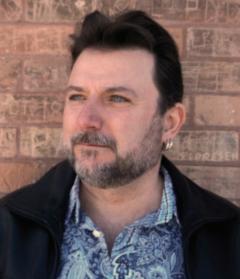
ISBN: 978-1-989786-64-2

Click to find this book at: https://www.wetinkbooks.com/publication/the-better-part-of-some-time/
I listened to every quavery word. More than once, he peered through me and warned: Don’t get old. Face grizzled with white stubble, shoulders stooped, the slant of his tweed cap. His gnarled hand would rise from the post-and-wire fence between us, give my shoulder a cold pat. He showed me which tall shoots of grass to chew. I followed suit, a bittersweet taste to summer I never questioned.
I remember the day I watched from behind Mom’s ruffled kitchen curtains as he shuffled to his sacred garden’s edge, raised his rifle at the corn-raiding raccoon bristling and brazen in the hot sun. It jerked with the bang, its sudden sag felt deep inside my ribs.
Gone to clean his gun, he phoned to give the all-clear. Mom let me hop the fence to see my first wild animal up close before he returned with a shovel. She made me promise not to touch it but never warned how death would rush up with bared teeth, eyes clouding, staring back from behind a gritty, black mask.
Blood red lay splattered across half-eaten cobs scattered in the dirt.
The grackles and jays resumed, the far spruces shaking off their shadows, but I failed to find anything that hadn’t lost its golden glow. Everywhere, crimson undercurrents, scarlet threads weaving through fresh-cut grass. They circled our rusted burn-barrel, swirled around our Datsun’s radio antenna, stained the walls of my childhood home. The inevitable eleventh hour lurking within, poised to spill its reckoning. Glint of a trigger, white of an eye, a young stalk of timothy uprooted, chewed, then spit out.
The photo doubly exposed –a dark ring encircling my head like an astronaut’s helmet.
Back to terra firma, reacquaint with the strangely new again, sun in my eyes, wagon barely made for one. I fancied it mine, wooden gunwales digging in-
to my legs, little brother’s back heavy against my chest. (Steve almost a year –
hard-soled baby shoes. My sneakers flat on the ground, proof I was invincible at three.)
Mom towing us around the bumpy yard by the handle. The wagon nothing more than a shallow-sided wooden tray atop a metal webbing of bars and channels for axles and such, coloured red to feel faster.
Despite the call to sit up straight, I slump in front of the stone fireplace, fretting over my latest math test, ankle still throbbing from bike crash, wondering how much the blue flash bulb will blind me this time.
When will I once again be in trouble for pestering my little brother in the car, forgetting to shovel the walk before dinner, or talking during the six o’clock news?
Will Monday’s school bus be full of bullies?
Will my teacher scar me with a C? Can I disappear into the furthest corner of the room? If I close my eyes, will the picture take shape without me?
The ice-blue flash of my new Kodak Instamatic slices the gloom, glint of winter sun through taffeta curtains, bleary as week-old butter. Mom’s at the kitchen counter, hands suspended mid-slice over the cutting board, slate-blue cardigan drooping from the weight of late afternoon, cluttered drying-rack draped with canary-yellow dish-gloves.
To her right, the Osterizer blender, cabinet-mounted AM radio, chrome toaster threatening to out-glare. To her left, my collie Prince, head at hip-height, ready for spills. The nearest cupboard door hangs ajar, revealing my brother’s and my plastic cups, two stacks of orange and red.
I don’t know why I took the shot, or if I was grounded after being told not to. None of it comes back quite like the certainty of a scolding. Another Christmas gone. Shutterbug son with 24 frames to fill – the hunch of her shoulders, set of her mouth, the shame of an ear stuck between strands of housework hair.
In my holiday best, I’m perched on a stool by our console TV, music stand never high enough to block their stares, Segovia scary as ever. I’m displayed like a stag’s head, the wall behind me adorned with Mom’s twirling anniversary clock, Dad’s revered sharpshooter plaques. Smile, they urge, as if I’m currency, making this show even more a sham. Three etudes in, my fingers stumble on the strings, Mom shakes her head, a grim No. I begin again.
On creaky porch stairs, my brother and I cuddle up to Granny B.. She pulls us in close and Grandad snaps the moment, her hair the perfect perm, a careful smile for the camera.
Front and centre, the relentless stretch of my skinny, white legs. I’m sporting a logo-less blue jersey, its bold 61 unclaimed. Steve’s, a faceless burnt orange, matches the front shutters.
Fiddlehead ferns bustle and brim along the front walk, leading to a young hosta in a tall, clay planter, like a phoenix hatchling born from soot.
Behind us, Grandad’s bow-rider nestles on its trailer, poised for Georgian Bay, Evinrude outboard beefy as a wrestler.
Deep in the late-afternoon shadows lurks the neighbour’s insulbrick, lake-blue shingles hazed over with the amber of pine needles.
The screen door yawns, Granny makes orange soda floats and we try once again to beat her at Rummy, praying Grandad will launch the boat.
But he fritters away the day in the garage, rummaging around for that certain wrench, waylaid by the lopsidedness of his own crooked shelves.
Later, we spot him spinning a yarn to a huddle of neighbours, beers all around. We set the table for Granny, battered aluminum pots bubbling on the burners, place her favourite tea cup
with its wild English roses by her plate, Grandad’s mug a utilitarian green. She gets us to call him home a third time. By then, he’s confounded why she didn’t work her magic
to keep the roast warm and tender for his arrival. He eats heartily, though, promises he’ll take us out fishing tomorrow, just like yesterday.
Twisted t-bar posts, rusted water pumps, fan motors long since expired. Brand new brake rotors for a ’93 Windstar, pitch forks, peony rings, coils of compressor hose. Beneath thick blankets of sawdust
and grime, stacks of fridge capacitors, gallon-jugs of two-stroke engine oil, corded drills and saws strictly off-limits to a younger me. Benches cluttered with greasy wrenches, vises, ratchets –a blur of other gadgets I couldn’t name.
Tucked away on a cor ner shelf, the popsicle-maker we built together for my grade seven science fair, wedged between a tangle of fishing rods and his trusty tackle-box, dented and packed with lost summers’ lures and hooks.
When not writing, Mike Madill pursues freelance editing, and has also taken turns as a social worker, computer analyst and home contractor. He holds a B.A. in Psychology from York University. His poems have been published across Canada, including in The Antigonish Review, The Dalhousie Review, Event, Existere, The Fiddlehead, Freefall, The Nashwaak Review, The New Quarterly, untethered, Vallum, White Wall Review and The Windsor Review. He was shortlisted for Freefall’s 2019-20 Poetry Contest, and an Honourable Mention in the inaugural 2021 Don Gutteridge Poetry Award Contest earned him publication of his debut collection, The Better Part of Some Time.

 Ken Solilo – Colborne Art Gallery https://thecolborneartgallery.ca/
Ken Solilo – Colborne Art Gallery https://thecolborneartgallery.ca/